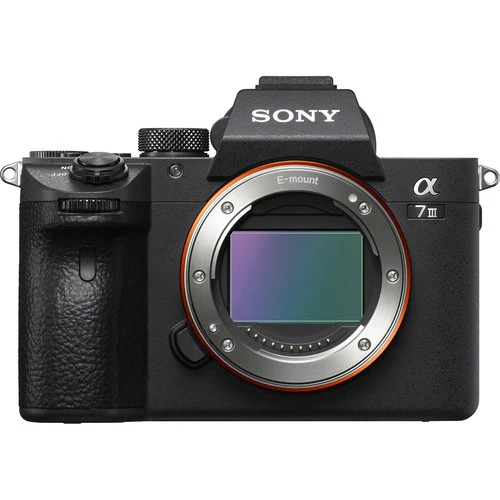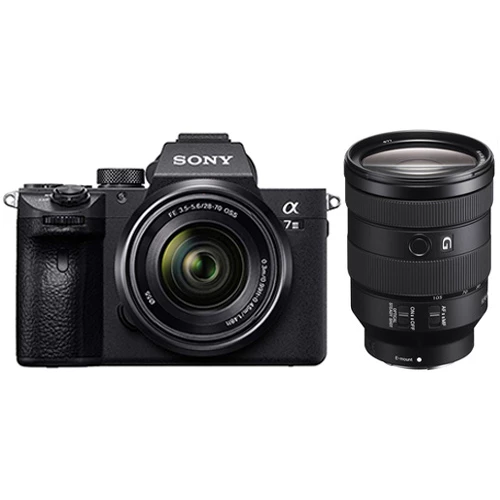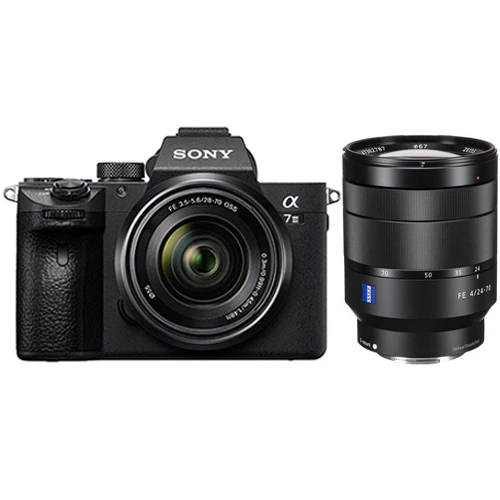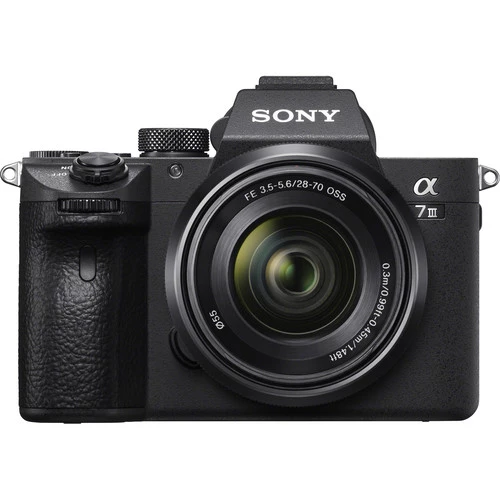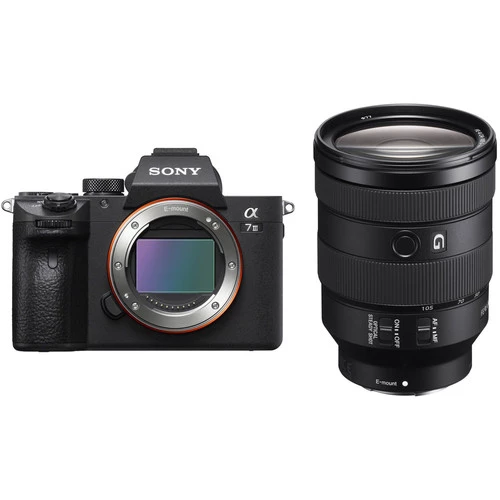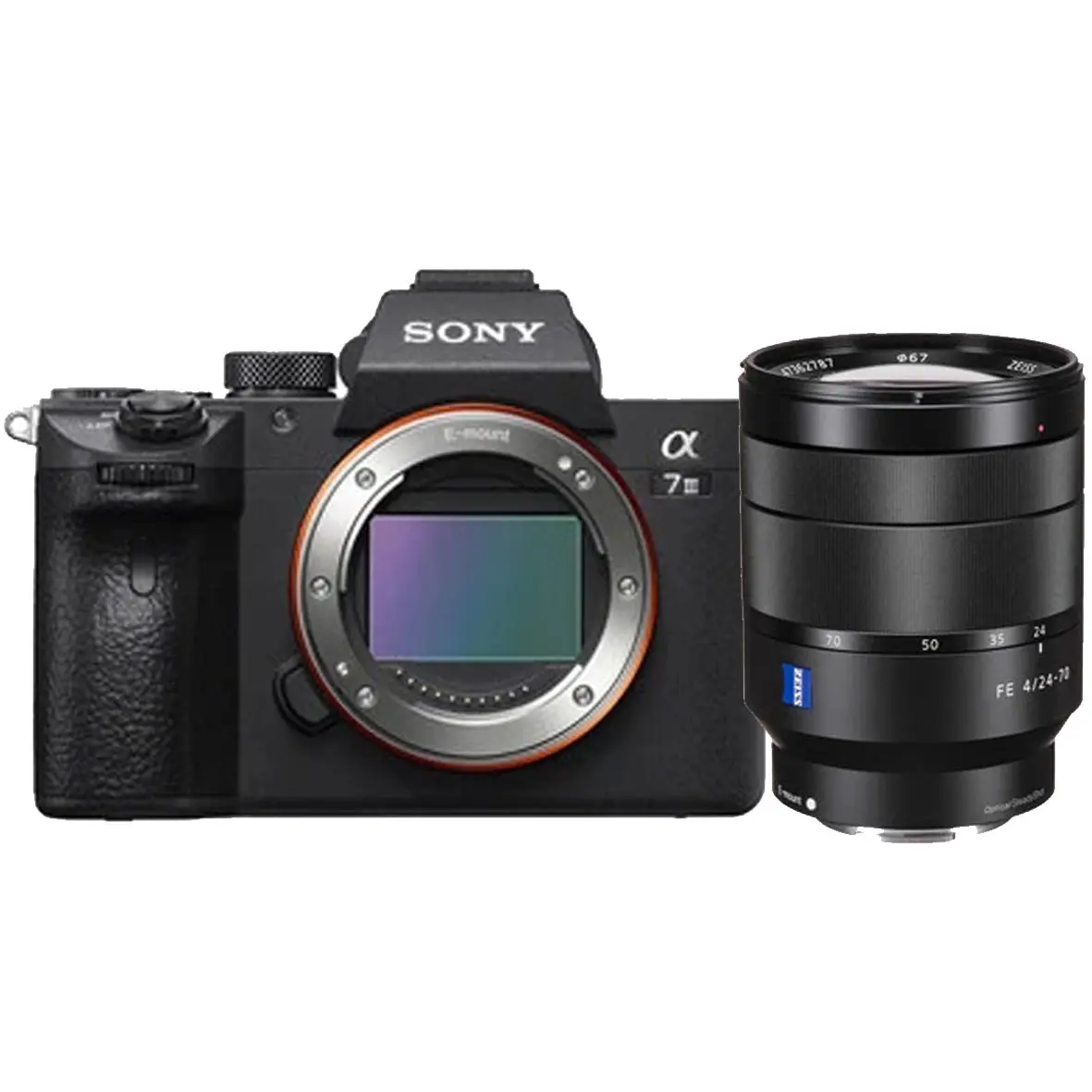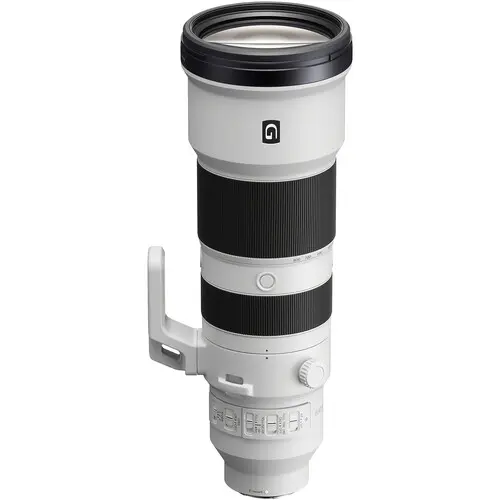Sony FE 70-200mm f/2.8 GM OSS Overview
Key Features
- E-Mount Lens/Full-Frame Format
- Aperture Range: f/2.8 to f/22
- One XA Element & Two Aspherical Elements
- Four ED Elements & Two Super ED Elements
- Nano AR Coating
- Dual Linear & Super Sonic Wave AF Motors
- Optical SteadyShot Image Stabilization
- Focus Hold Buttons; Focus Range Limiter
- Dust and Moisture-Resistant Construction
- Rounded 11-Blade Diaphragm
Refined Telephoto Zoom
Boasting exceptional optics, intuitive handling, and outstanding speed in all aspects, the Sony FE 70-200mm f/2.8 GM OSS takes its place as a reliable, go-to telephoto zoom for professionals. A member of the G Master series, this 70-200mm delivers high sharpness alongside smooth, clean bokeh, and the bright f/2.8 constant maximum aperture and optical image stabilization also help to ensure sharp handheld shots in available lighting conditions.
G Master Optics

- As part of Sony's esteemed G Master series, this lens is designed to achieve notably high resolution and sharpness through the correction of a wide variety of spherical and chromatic aberrations.
- A constant f/2.8 maximum aperture offers consistent performance throughout the zoom range and also lends greater control over focus position for shallow depth of field techniques.
- Nano AR Coating has been applied to reduce surface reflections, flare, and ghosting for increased contrast and color rendering in strong lighting conditions.
- Rounded 11-blade diaphragm contributes to a pleasing bokeh quality when employing selective focus techniques.
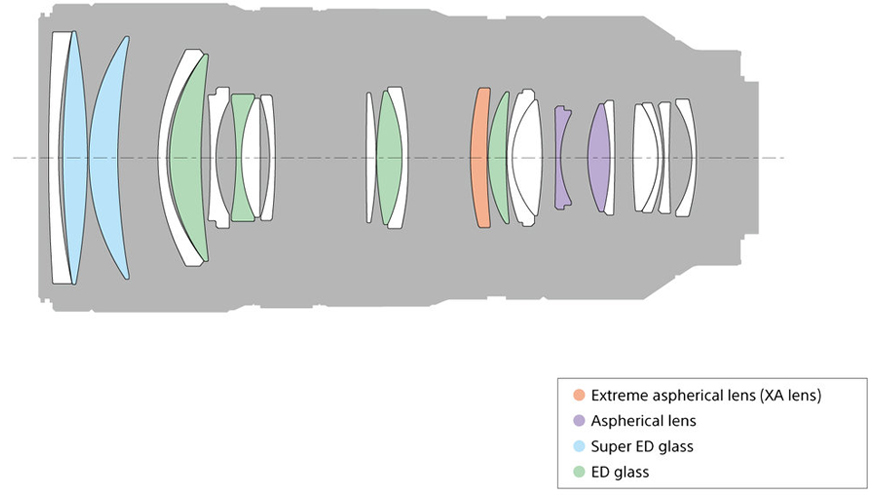
- Of the three aspherical elements incorporated in the lens design, one is an XA element with superior surface precision to effectively reduce astigmatism, field curvature, coma, and other monochromatic aberrations from imagery.
- Four extra-low dispersion elements and two Super ED elements are featured in the lens design, too, and help to control chromatic aberrations and reduce color fringing for increased clarity and color fidelity.
Reliable Autofocus and Image Stabilization
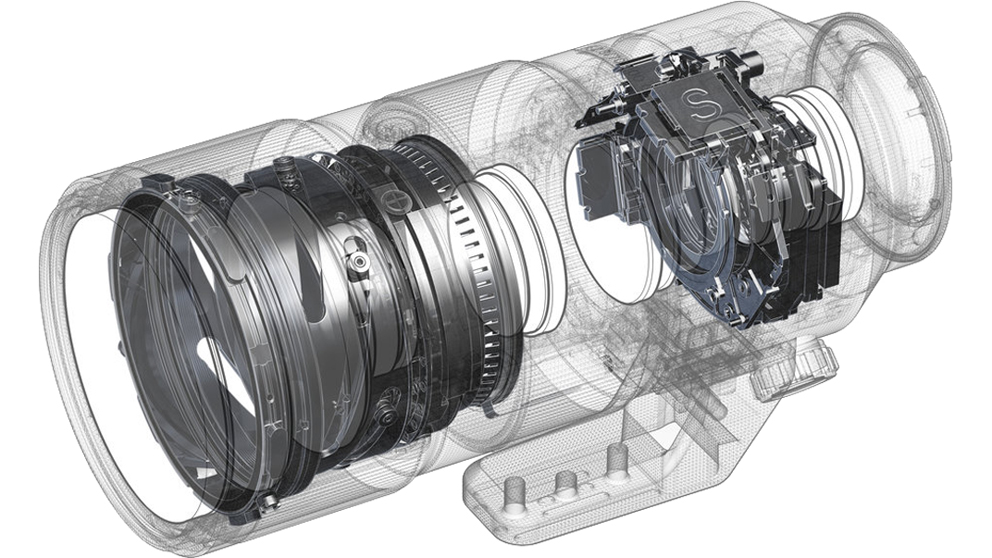
- Advanced double-linear and ring Super Sonic wave Motor system ensure fast, precise and accurate autofocus in both stills and video.
- Floating elements system benefits image quality when working at the 3.15' minimum focusing distance with 0.25x magnification.
- The lens barrel is equipped with three focus hold buttons and a focus range limiter switch to permit fast, intuitive operation of the lens while shooting.
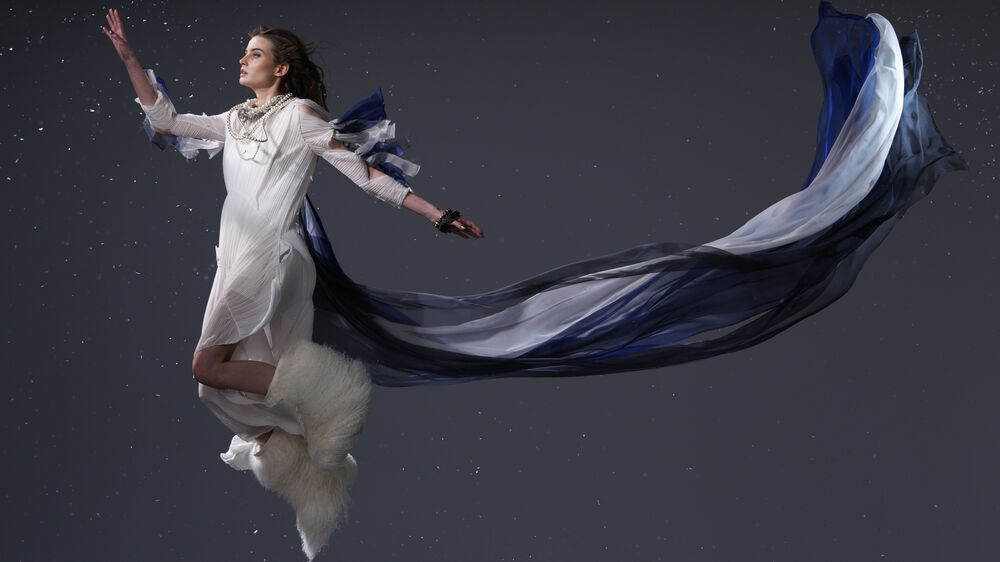
- Optical SteadyShot image stabilization helps to minimize the appearance of camera shake for sharper imagery when shooting handheld with slower shutter speeds. This stabilization system can also be combined with select camera's sensor-shift type image stabilization for more effective control of camera blur.
- An OSS Mode switch lets you choose Mode 1 for general image stabilization that is suited to most types of shooting as well as a Mode 2 setting that is specifically intended to be used with panning movements.
Professional Build and Intuitive Handling

- Dust- and moisture-sealed design better permits working in inclement conditions.
- The front lens element features a fluorine coating to protect against smudges and dust from adhering to the glass surface.
- A removable, rotating tripod mount permits quick switching from horizontal to vertical shooting orientations.
- Included petal-shaped lens hood helps prevent flaring and has a filter access window for making adjustments to rotating filters such as polarizers and variable NDs.
- Compatible with optional 1.4x and 2x teleconverters to further extend the effective focal length.
Sony FE 70-200mm f/4 G OSS Overview
Key Features
- E-Mount Lens/Full-Frame Format
- Aperture Range: f/4 to f/22
- Two ED Elements & One Super ED Element
- Two AA Elements & One Aspherical Element
- Nano AR Coating
- Dual Linear AF Motors; Internal Focus
- Optical SteadyShot Image Stabilization
- Focus Hold Buttons; Focus Range Limiter
- Dust and Moisture-Resistant Construction
- Removable, Rotating Tripod Collar
Compact, Stabilized Telephoto Zoom for Full-Frame
A workhorse lens for events, sports, and portraiture, the Sony FE 70-200mm f/4 G OSS is a compact telephoto zoom featuring a constant f/4 maximum aperture, sophisticated G series optics, and useful AF and OSS. The smaller size, compared to an f/2.8 version, makes the lens a more portable option that is well-suited to all-day shoots and other situations where a more nimble, stabilized lens excels.
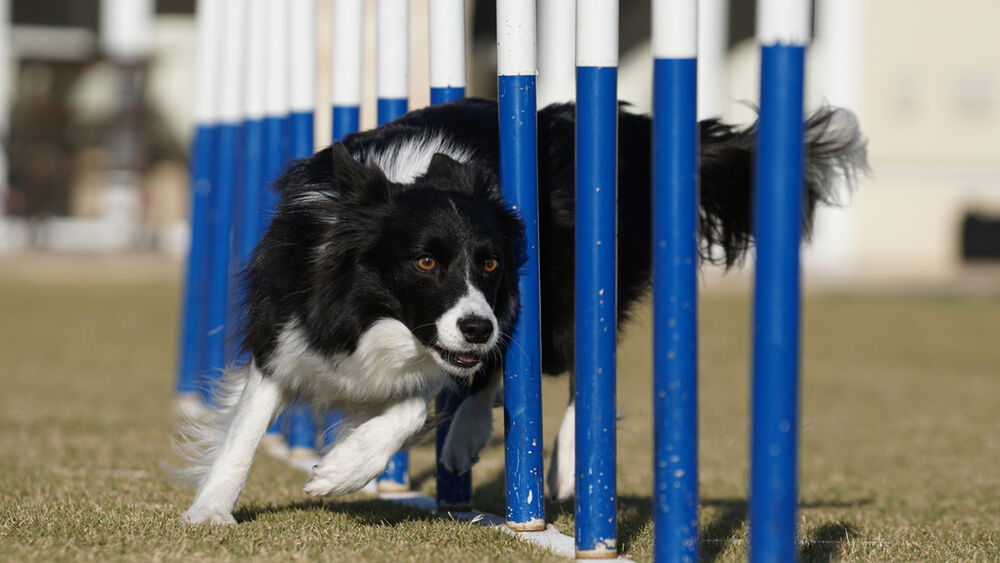
G Lens Series
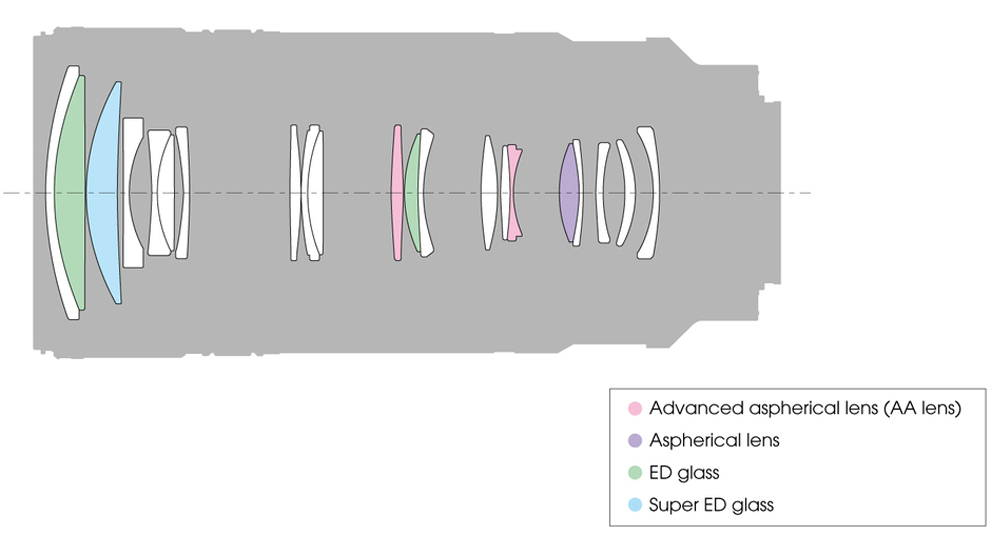
- Two extra-low dispersion glass elements and one Super ED element help reduce chromatic aberrations and color fringing for improved clarity and color neutrality.
- One aspherical element and two Advanced Aspherical (AA) elements help suppress astigmatism, field curvature, coma, and other monochromatic aberrations.
- A Nano AR coating has been applied to reduce surface reflections, flare, and ghosting for increased contrast and color rendering in strong lighting conditions.

- Constant f/4 maximum aperture offers consistent performance throughout the zoom range and also lends greater control over focus position for shallow depth of field techniques.
- Versatile zoom range suits working with a variety of subjects, from portraiture and events applications to landscapes and sports shooting.
- Rounded nine-blade diaphragm contributes to a pleasing bokeh quality when employing selective focus techniques.
Image Stabilization, AF, and Handling

- Dual linear motors and an internal focus mechanism enable fast, responsive autofocus and object tracking. The lens can also focus as close as 3.3' for close up imaging.
- Focus range limiter switch allows you constrain the usable focus range between a set limited range or full for improving focus speed
- Three focus hold buttons and an AF/MF switch is present on the lens barrel for intuitive tactile control and rapid access to select settings.

- Optical SteadyShot image stabilization helps to minimize the appearance of camera shake for sharper imagery when shooting handheld with slower shutter speeds.
- This stabilization system can also be combined with select camera's sensor-shift type image stabilization for more effective control of camera blur.
- Dust- and moisture-sealed design better permits working in inclement conditions and rubberized control rings benefit handling in colder temperatures.
- Removable and rotating tripod collar for added stability and reducing strain on the camera's lens mount.
Sony FE 70-300mm F4.5-5.6 G OSS Lens
Key Features
- E-Mount Lens/Full-Frame format
- Aperture Range: f/4.5 to f/29
- Two ED and Four Aspherical Elements
- Nano AR Coating
Sony FE 70-300mm f/4.5-5.6 G OSS Overview
Spanning a useful Range of telephoto focal lengths, the FE 70-300mm f/4.5-5.6 G OSS from Sony is a versatile zoom lens designed for full-frame E-mount mirrorless cameras. Complementing the reach, this lens' optical design incorporates four aspherical elements and two extra-low dispersion glass elements to control spherical and chromatic aberrations throughout the zoom Range for increased clarity, sharpness, and color accuracy. A Nano AR coating has also been applied to individual lens elements to minimize lens flare and ghosting for increased contrast and color fidelity when working in strong lighting conditions. Well-suited to a variety of telephoto needs, this zoom lens balances both a versatile focal length Range along with a sophisticated optical design for maintained image quality.
Working in concert with the optical assets, this lens also incorporates an Optical SteadyShot image stabilization mechanism that minimizes the appearance of camera shake for sharper handheld shooting. Also benefitting sharpness is a linear actuator autofocus system, which offers smooth, quiet focusing performance to support both stills and movie recording applications. An internal focusing mechanism is also employed, which limits the overall length of the lens when focusing and both a focus Range limiter and focus hold button facilitate more intuitive handling. Additionally, the lens is designed to be dust- and moisture resistant for use in trying conditions.
- Designed to cover a variety of telephoto perspectives, this full-frame 70-300mm E-mount lens can also be used on APS-C format cameras where it will provide an equivalent zoom Range of 105-450mm.
- A variable f/4.5-5.6 aperture helps keep lens size and weight to a minimum while still offering outstanding image quality.
- Two extra-low dispersion glass elements are featured in the lens design to help reduce chromatic aberrations and color fringing for improved clarity and color neutrality.
- Four aspherical elements are incorporated in the lens design to reduce astigmatism, field curvature, coma, and other monochromatic aberrations.
- Optical SteadyShot image stabilization helps to minimize the appearance of camera shake for sharper imagery when shooting handheld with slower shutter speeds. This stabilization system can also be combined with Select camera's sensor-shift type image stabilization for more effective control of camera blur.
- A linear autofocus motor and internal focus design provide quick and precise autofocus performance and enables accurate and silent focusing while recording videos.
- A focus Range limiter button offers faster performance when photographing moving subjects.
- Dust- and moisture-sealed design better permits working in inclement conditions and rubberized control rings benefit handling in colder temperatures.
- Rounded nine-blade diaphragm contributes to a pleasing bokeh quality when employing Selective focus techniques.
Sony FE 85mm f/1.8 Overview
Key Features
- E-Mount Lens/Full-Frame Format
- Aperture Range: f/1.8 to f/22
- One Extra-Low Dispersion Element
- Double Linear AF Motor
- Focus Hold Button; AF/MF Switch
- Dust- and Moisture-Resistant
- Rounded 9-Blade Diaphragm
Nimble Portrait Prime
An ideal portrait-length prime, the FE 85mm f/1.8 from Sony is a sleek short-telephoto lens designed for full-frame E-mount mirrorless cameras. The bright f/1.8 design is an ideal balance between speed and a compact form factor and the slightly long focal length offers a flattering perspective for portraiture and event photography.
Optical Design

- Bright f/1.8 maximum aperture allows for fine-tuned control over depth of field and also benefits working in difficult lighting conditions.
- One extra-low dispersion element is featured in the optical design and helps to limit color fringing and chromatic aberrations for heightened image clarity and color accuracy.
- Rounded nine-blade diaphragm contributes to a pleasing bokeh quality when employing selective focus techniques.
Autofocus and Handling
- Double linear autofocus motor delivers smooth, precise, and near silent focusing performance to benefit both stills and video applications.
- Focus hold button on the lens barrel can be used to hold the focusing position, or can be set in-camera to control a variety of additional lens functions.
- AF/MF switch for tactile control over the focus mode.
- Dust- and moisture-resistant design for increased protection to the elements.
Sony FE 90mm f/2.8 Macro G OSS Overview
Key Features
- E-Mount Lens/Full-Frame Format
- Aperture Range: f/2.8 to f/22
- 1:1 Magnification Ratio; Internal Focus
- Minimum Focus Distance: 11"
- Aspherical, ED and Super ED Elements
- Nano AR Coating
- Direct Drive Super Sonic Wave AF Motor
- Optical SteadyShot Image Stabilization
- Sliding Focus Ring for AF/MF Selection
- Focus Hold Button; Focus Range Limiter
G Lens, Macro Versatility
Get up close and personal with the 1:1 magnification ratio of the full-frame compatible Sony FE 90mm f/2.8 Macro G OSS Lens. As a G series lens, it perfectly balances sharpness and bokeh and, as a macro lens, close and controlled focusing performance is prioritized with advanced AF and intuitive handling.

Close-Up Capabilities
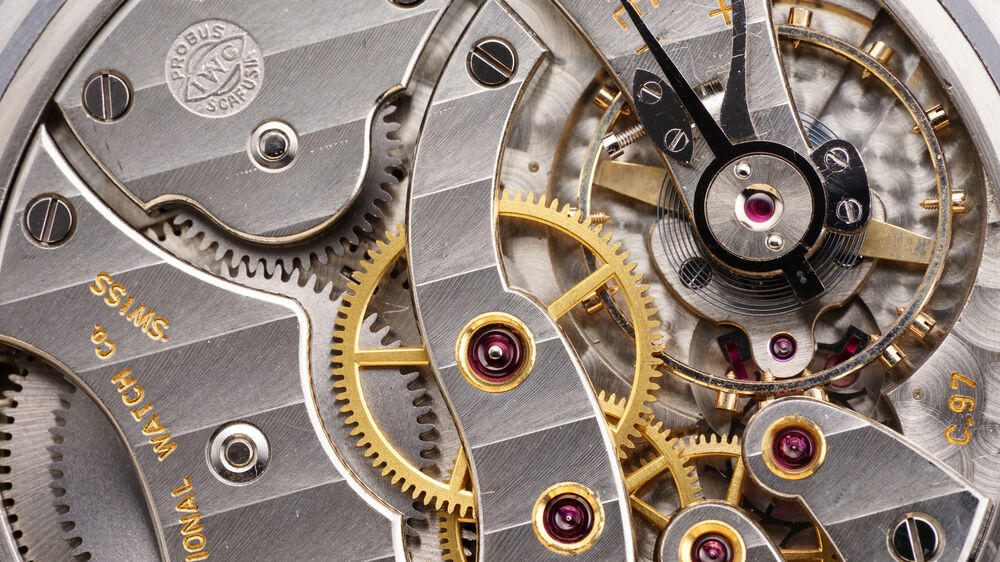
- True macro design affords a life-size, 1:1 magnification ratio along with an 11" minimum focusing distance for working with close-up subjects.
- Focusing distance and magnification scale is printed on top of the lens to aid in more technical applications.
- Focus range limiter switch allows you constrain the usable focus range between 11-19.7", 19.7"-infinity, or full.
- This lens' focusing ring can be slid forwards and backwards to quickly shift between manual to autofocus modes.
- Internal focusing design maintains the overall lens length during use, benefitting focus accuracy and ease of use when working distance is a concern.
G Series Optical Design
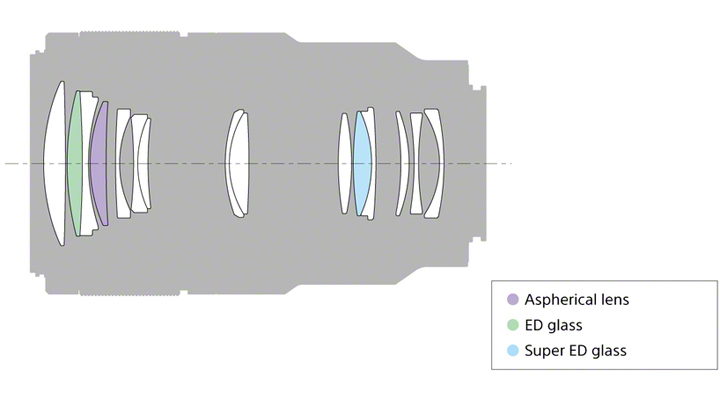
- Two extra-low dispersion elements, including one Super ED element, are featured in the lens design to reduce chromatic aberrations and color fringing for improved clarity and color neutrality.
- One aspherical element helps reduce astigmatism, field curvature, coma, and other monochromatic aberrations.
- Nano AR Coating has been applied to reduce surface reflections, flare, and ghosting for increased contrast and color rendering in strong lighting conditions.
- Rounded nine-blade diaphragm contributes to a pleasing bokeh quality when employing selective focus techniques.
Autofocus and Image Stabilization

- Direct Drive SSM system, along with the internal focusing design, promotes responsive and precise autofocus performance that's also quiet to suit video recording applications.
- Focus hold button permits manually stopping the autofocus at a specified point or the button can also be customized to control a variety of other assignable functions.
- Optical SteadyShot image stabilization helps to minimize the appearance of camera shake for sharper imagery when shooting handheld with slower shutter speeds. This stabilization system can also be combined with select camera's sensor-shift type image stabilization for more effective control of camera blur.
Sony Planar T* FE 50mm f/1.4 ZA Overview
Key Features
- E-Mount Lens/Full-Frame Format
- Aperture Range: f/1.4 to f/16
- One AA Element & One Aspherical Element
- One Extra-Low Dispersion Element
- ZEISS T* Anti-Reflective Coating
- Ring Drive Super Sonic Wave AF Motor
- AF/MF Switch; Internal Focus
- Physical Aperture Ring; De-Click Switch
- Dust- & Moisture-Resistant Construction
- Rounded 11-Blade Diaphragm
With its normal perspective, fast maximum aperture, and high-end design, the Planar T* FE 50mm f/1.4 ZA Lens from Sony is easy to see as a go-to standard optic for full-frame E-mount shooters. The 50mm focal length excels as an all-around field of view, suitable for portraiture, landscapes, and more, and the bright design offers creative depth of field control and low-light performance.
ZEISS Optical Design

- Based on the ZEISS Planar optical concept, this lens uses a design with 12 elements in 9 groups that helps achieve the large maximum aperture of f/1.4 while helping to minimize chromatic aberrations.
- Fast f/1.4 maximum aperture benefits working in difficult lighting conditions and also offers a wealth of control over focus position when using shallow depth of field techniques.
- Rounded eleven-blade diaphragm contributes to a pleasing bokeh quality when employing selective focus techniques.

- ZEISS T* anti-reflective coatings have been applied to each lens surface to help minimize reflections in order to provide greater image clarity, contrast, and color fidelity.
- One Advanced Aspherical (AA) and one aspherical element are incorporated into the optical design for effective control over astigmatism, field curvature, coma, and other spherical aberrations.
- One extra-low dispersion element is featured in the lens design to help reduce chromatic aberrations and color fringing for improved clarity and color neutrality.
Autofocus and Handling

- Ring drive Super Sonic wave Motor autofocus system and internal focus mechanism provides quick, quiet, and precise autofocus performance and also contributes to more natural, intuitive manual focus control.
- AF/MF switch is located on the lens barrel for tactile control over focus modes.
- Physical aperture ring can be de-clicked for smooth, silent aperture switching to benefit video applications.
- Dust- and moisture-sealed design better permits working in inclement conditions and rubberized control rings benefit handling in colder temperatures.
Sony Sonnar T* FE 55mm f/1.8 ZA Overview
Key Features
- E-Mount Lens/Full-Frame Format
- Aperture Range: f/1.8 to f/22
- Three Aspherical Elements
- ZEISS T* Anti-Reflective Coating
- Linear Autofocus Motor; Internal Focus
- Minimum Focus Distance: 1.6'
- Dust and Moisture-Resistant Construction
- Rounded 9-Blade Diaphragm
Premier Portrait Prime
A perfect pairing for full-frame Sony E-mount cameras, the Sonnar T* FE 55mm f/1.8 ZA Lens offers excellent resolution and a bright f/1.8 aperture for photographers looking for a high-performing normal-length prime.
ZEISS Optical Design

- Based on the ZEISS Sonnar optical concept, this lens uses a design with seven elements in five groups that helps achieve the large maximum aperture of f/1.8 while simultaneously reducing flare and improving contrast.
- Bright f/1.8 maximum aperture allows users to create images with shallow depth of field and work in low-light conditions with relative ease.
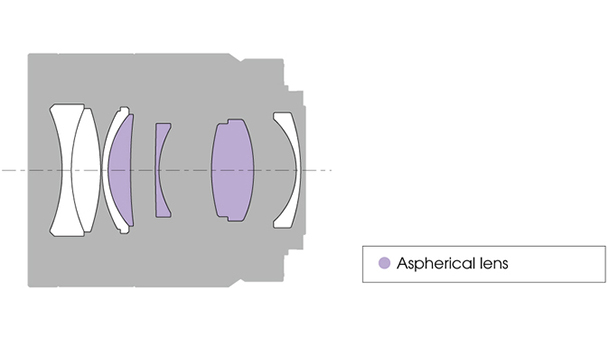
- Three aspherical elements, including two double-sided, are incorporated in the lens design to reduce astigmatism, field curvature, coma, and other monochromatic aberrations.
- ZEISS T* anti-reflective coatings have been applied to each lens surface to help minimize reflections in order to provide greater image clarity, contrast, and color fidelity.
- Rounded nine-blade diaphragm contributes to a pleasing bokeh quality when employing selective focus techniques.
Autofocus and Design

- Linear autofocus motor and internal focus design provide quick and precise autofocus performance and enables accurate and silent focusing while recording videos.
- Dust- and moisture-sealed design better permits working in inclement conditions and rubberized control rings benefit handling in colder temperatures.
Sony Vario-Tessar T* FE 16-35mm f/4 ZA OSS Overview
Key Features
- E-Mount Lens/Full-Frame Format
- Aperture Range: f/4 to f/22
- One AA Element; Four Aspherical Elements
- Three Extra-Low Dispersion Elements
- ZEISS T* Anti-Reflective Coating
- Linear Autofocus Motor; Internal Focus
- Optical SteadyShot Image Stabilization
- Dust and Moisture-Resistant Construction
- Rounded 7-Blade Diaphragm
Sleek Wide-Angle Versatility
A compact and weather-resistant option, the Vario-Tessar T* FE 16-35mm f/4 ZA OSS Lens from Sony will satisfy nearly all the wide-angle needs of full-frame E-mount shooters. The flexible wide zoom is characterized by a constant f/4 maximum aperture, making this an ideal lens for street, landscapes, cityscapes, and other subjects requiring a broad field of view and the inherent versatility of a zoom.
ZEISS Optical Design

- Based on the ZEISS Tessar optical concept, this lens uses a design with 12 elements in ten groups that helps ensure a smaller overall lens size along with reduced flaring, distortion, and chromatic aberrations.
- Constant f/4 maximum aperture offers consistent performance throughout the zoom range and also lends greater control over focus position for shallow depth of field techniques.
- Rounded seven-blade diaphragm contributes to a pleasing bokeh quality when employing selective focus techniques.

- ZEISS T* anti-reflective coatings have been applied to each lens surface to help minimize reflections in order to provide greater image clarity, contrast, and color fidelity.
- Three extra-low dispersion glass elements are featured in the lens design to help reduce chromatic aberrations and color fringing for improved clarity and color neutrality.
- Five aspherical elements, including one large-diameter Advanced Aspherical (AA) element, are incorporated in the lens design to reduce astigmatism, field curvature, coma, and other monochromatic aberrations.
Image Stabilization, AF, and Handling

- Optical SteadyShot image stabilization helps to minimize the appearance of camera shake for sharper imagery when shooting handheld with slower shutter speeds. This stabilization system can also be combined with select camera's sensor-shift type image stabilization for more effective control of camera blur.
- A linear autofocus motor and internal focus design provide quick and precise autofocus performance and enables accurate and silent focusing while recording videos.
- Dust- and moisture-sealed design better permits working in inclement conditions and rubberized control rings benefit handling in colder temperatures.
Sony Vario-Tessar T* FE 24-70mm f/4 ZA OSS Overview
Key Features
- E-Mount Lens/Full-Frame Format
- Aperture Range: f/4 to f/22
- One ED and Five Aspherical Elements
- ZEISS T* Anti-Reflective Coating
- Linear Autofocus Motor; Internal Focus
- Optical SteadyShot Image Stabilization
- Dust and Moisture-Resistant Construction
- Rounded 7-Blade Diaphragm
The Portable Standard Zoom
Walk around all day with the Vario-Tessar T* FE 24-70mm f/4 ZA OSS Lens from Sony, a compact full-frame option that covers wide-angle to short telephoto perspectives for working with a variety of different shooting styles and subjects.
ZEISS Optical Design

- Based on the ZEISS Tessar optical concept, this lens uses a design with 12 elements in ten groups that helps ensure a smaller overall lens size along with reduced flaring, distortion, and chromatic aberrations.
- A constant f/4 maximum aperture offers consistent performance throughout the zoom range and also lends greater control over focus position for shallow depth of field techniques.
- ZEISS T* anti-reflective coatings have been applied to each lens surface to help minimize reflections in order to provide greater image clarity, contrast, and color fidelity.
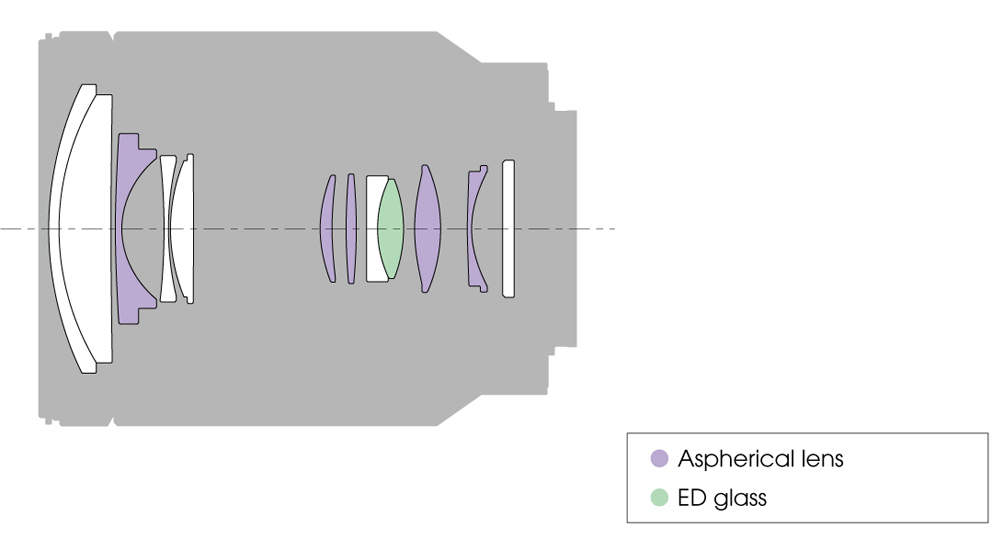
- One extra-low dispersion glass element is featured in the lens design to help reduce chromatic aberrations and color fringing for improved clarity and color neutrality.
- Five aspherical elements are incorporated in the lens design to reduce astigmatism, field curvature, coma, and other monochromatic aberrations.
- Rounded seven-blade diaphragm contributes to a pleasing bokeh quality when employing selective focus techniques.
Autofocus, OSS, and Design

- Optical SteadyShot image stabilization helps to minimize the appearance of camera shake for sharper imagery when shooting handheld with slower shutter speeds. This stabilization system can also be combined with select camera's sensor-shift type image stabilization for more effective control of camera blur.
- A linear autofocus motor and internal focus design provide quick and precise autofocus performance and enables accurate and silent focusing while recording videos.
- Dust- and moisture-sealed design better permits working in inclement conditions and rubberized control rings benefit handling in colder temperatures.
Sony A6400 Overview
Key Features
- 24.2MP APS-C Exmor CMOS Sensor
- BIONZ X Image Processor
- Real-Time Eye AF & Real-Time Tracking
- XGA Tru-Finder 2.36m-Dot OLED EVF
- 3.0" 921.6k-Dot 180° Tilting Touchscreen
- Internal UHD 4K Video, S-Log3, and HLG
- S&Q Motion in Full HD from 1-120 fps
- Built-In Wi-Fi with NFC
- 425 Phase- & Contrast-Detect AF Points
- Up to 11 fps Shooting and ISO 102400
Grab the Best of Life
Menghadirkan desain yang andal dan performa yang tepat untuk meningkatkan kreativitas, Sony a6400 adalah kamera mirrorless format APS-C ramping yang dilengkapi dengan baik- kemampuan foto dan video bulat. Menggunakan desain sensor yang telah terbukti, performa AF yang cepat dan presisi, serta pengoperasian yang cerdas, kamera ini adalah mitra ideal untuk mengabadikan momen sehari-hari dan pengalaman sekali seumur hidup Anda.
24.2MP APS-C Exmor CMOS Sensor and BIONZ X Processor

Sensor Exmor CMOS 24,2MP format APS-C menghasilkan kualitas gambar yang halus dan bernuansa dengan noise minimal dan sensitivitas tinggi dari ISO 100-32000, yang selanjutnya dapat diperluas ke ISO 102400 untuk bekerja dalam kondisi cahaya rendah. Sensor ini memiliki desain unik yang memanfaatkan kabel tembaga tipis, pemrosesan sirkuit yang ditingkatkan, dan LSI front-end yang ditingkatkan untuk meningkatkan kemampuan pengumpulan cahaya, mengurangi kebisingan, dan meningkatkan kecepatan pembacaan untuk memanfaatkan perekaman video. Kombinasi sensor dan prosesor BIONZ X juga menyediakan kecepatan pengambilan gambar kontinu tertinggi sebesar 11 fps dengan AF dan AE, atau hingga 8 fps dengan rana senyap, dan memungkinkan output file mentah 14-bit untuk skala nada dan warna yang lebar.
UHD 4K Video Recording in XAVC S Format
- Perekaman internal video UHD 4K dimungkinkan dalam beberapa kecepatan bingkai hingga 30 fps menggunakan sensor lebar penuh dengan pengambilan sampel warna 8-bit 4:2:0 menggunakan codec XAVC S 100Mbps.
- Perekaman 4K dengan sampel berlebih juga dimungkinkan, yang menggunakan area pengambilan 6K dalam area Super 35, untuk detail yang lebih baik. Pembacaan piksel penuh ini tidak memerlukan pixel binning untuk citra berkualitas lebih tinggi dengan pengurangan moiré dan aliasing.
- Memberikan kontrol warna dan gamma ekstensif yang dapat disesuaikan, ZV-E10 memungkinkan pengguna menyesuaikan gamma, tingkat hitam, batas, tingkat warna, dan banyak lagi. Gunakan Kurva Gamma S-Log2 yang sama seperti yang ditemukan pada kamera Sony Cinema kelas atas, yang memasukkan rentang dinamis hingga 1300% lebih banyak ke dalam sinyal video dibandingkan Rec. 709, untuk meningkatkan fleksibilitas pasca produksi. Dukungan HLG (Hybrid Log-Gamma) juga tersedia, bersama dengan ruang warna BT.2020, untuk perekaman dalam gamut warna yang lebar dan, selain S-Log2, S-Log3 juga tersedia untuk menghasilkan 14-stop yang efektif rentang dinamis dengan peningkatan kontrol gradasi pada area bayangan hingga rona tengah pada gambar.
- Selain perekaman internal resolusi tinggi, output HDMI yang tidak terkompresi juga memungkinkan penggunaan perekam eksternal opsional untuk perekaman 4K yang bersih dengan pengambilan sampel 4:2:2.
- Mode pengambilan gambar interval sangat ideal untuk membuat film selang waktu dengan bantuan perangkat lunak Imaging Edge. Interval dapat dipilih antara 1-60 detik untuk merekam hingga 9999 frame berurutan.
- Perekaman video 4K juga menyediakan kemampuan untuk menghasilkan gambar diam 8MP selama pemutaran dengan mengambil bingkai dari film dan menyimpannya sebagai file terpisah.
- Lambat & Mode Cepat (S&Q) memungkinkan penembak merekam video Full HD pada langkah tertentu antara 1-120 fps. Pengaturan ini memungkinkan Anda memperlambat aksi serta mempercepat adegan yang bergerak lambat.
4D FOCUS
Mencakup hampir seluruh area sensor, sistem FOKUS 4D yang kuat menggabungkan 425 titik deteksi fase pada chip bersama dengan 425 area deteksi kontras untuk pemfokusan presisi hanya dalam 0,02 detik. Kepadatan titik fokus dari sistem AF hybrid ini juga memungkinkan Teknologi High-density Tracking AF yang mahir melacak subjek bergerak dalam berbagai kondisi pencahayaan.
- Eye AF Real-time dapat digunakan untuk mendasarkan fokus pada subjek manusia yang dikenali. mata untuk potret dan tersedia dalam mode AF-S dan AF-C serta untuk gambar diam dan video.
- Eye AF juga dapat digunakan saat memotret subjek hewan, dengan mode pemfokusan apa pun saat memotret gambar diam.
- Lock-on AF mempertahankan fokus pada subjek bergerak selama penggunaan bingkai yang dapat dikonfigurasi dan diatur pada subjek bergerak yang diinginkan
- Perluas Tempat Fleksibel menggunakan titik fokus di dekatnya untuk mempertahankan fokus pada subjek bergerak meskipun titik yang dipilih semula kehilangan fokus
- Fungsi Kaca Pembesar Fokus dapat digunakan untuk fokus kritis ketika melihat detail subjek yang sangat kecil
- Layar sentuh belakang dapat digunakan untuk kontrol Fokus Sentuh dan Pelacakan Sentuh dan mode Kontrol Fokus Touchpad memungkinkan Anda menggunakan layar belakang secara intuitif sambil tetap memperhatikan jendela bidik
- Selain fokus otomatis, a6400 juga dilengkapi fungsi Peaking MF untuk memanfaatkan kontrol fokus manual dengan menyoroti tepi kontras yang tajam untuk cara yang lebih obyektif dalam memperoleh fokus yang tajam.
Body Design and Connectivity
- Tru-Finder 2.36m-dot OLED electronic viewfinder offers a bright, high-resolution means for eye-level monitoring.
- A 3.0" 921.6k-dot LCD touchscreen can be tilted 180° upward or 74° downward to suit working from high and low angles. The screen also incorporates White Magic technology with an RGBW pixel structure for increased brightness to support use in daylight conditions.
- The touchscreen design avails access to Touch Focus control, for immediate focus point selection, as well as a Touchpad function which lets you smoothly and intuitively select a focus point on the screen while you're looking into the viewfinder.
- Integrated 3.5mm microphone ports afford greater control over audio during video recording.
- The included NP-FW50 rechargeable lithium-ion is rated for approximately 410 shots per charge when working with the LCD screen or 360 shots when using the viewfinder.
- In addition to the battery, the a6400 can also be powered via a USB connection to a computer or mobile battery. This connection can also be used to charge the battery.
- Built-in Wi-Fi enables the a6400 to instantly share imagery to mobile devices for direct sharing online to social networking, via email, and to cloud storage sites. NFC (Near Field Communication) is also supported, which allows for one-touch connection between the camera and compatible mobile devices; no complex set-up is required. Once connected, the linked mobile device can also display a live view image on its screen and remotely control the camera's shutter.
- Bluetooth connectivity allows for location data acquisition.
Sony A6400 Overview
Key Features
- 24.2MP APS-C Exmor CMOS Sensor
- BIONZ X Image Processor
- Real-Time Eye AF & Real-Time Tracking
- XGA Tru-Finder 2.36m-Dot OLED EVF
- 3.0" 921.6k-Dot 180° Tilting Touchscreen
- Internal UHD 4K Video, S-Log3, and HLG
- Built-In Wi-Fi with NFC
- 425 Phase- & Contrast-Detect AF Points
- Up to 11 fps Shooting and ISO 102400
- E PZ 16-50mm f/3.5-5.6 OSS Lens
Sony a6400 Mirrorless Camera
Grab the Best of Life
Featuring a reliable design and apt performance to bolster creativity, the Sony a6400 is a sleek APS-C-format mirrorless camera featuring well-rounded photo and video capabilities. Using a proven sensor design, quick and precise AF performance, and smart operability, this camera is an ideal partner for capturing your everyday moments and once-in-a-lifetime experiences.
24.2MP APS-C Exmor CMOS Sensor and BIONZ X Processor

The APS-C-format 24.2MP Exmor CMOS sensor realizes smooth, nuanced image quality with minimal noise and high sensitivity from ISO 100-32000, which can further be expanded to ISO 102400 for working in low-light conditions. The sensor features a unique design that utilizes thin copper wiring, enhanced circuit processing, and an enhanced front-end LSI to boost light-gathering abilities, reduce noise, and increase readout speeds to benefit video recording. The sensor and BIONZ X processor combination also avails a top continuous-shooting rate of 11 fps with AF and AE, or up to 8 fps with a silent shutter, and permits 14-bit raw file output for a wide tonal and color scale.
UHD 4K Video Recording in XAVC S Format
- Internal recording of UHD 4K video is possible in multiple frame rates up to 30 fps using the full width of the sensor with 8-bit 4:2:0 color sampling using the 100Mbps XAVC S codec.
- Oversampled 4K recording is also possible, which uses a 6K capture area within the Super 35 area, for greater detail. This full pixel readout is void of pixel binning for higher quality imagery with reduced moiré and aliasing.
- Affording extensive customizable color and gamma controls, the ZV-E10 allows users to adjust the gamma, black level, knee, color level, and more. Use the same S-Log2 Gamma Curve that is found on high-end Sony Cinema cameras, which squeezes up to 1300% more dynamic range into the video signal then traditional Rec. 709, for increased post-production flexibility. HLG (Hybrid Log-Gamma) support is also available, along with the BT.2020 color space, for recording within a wide color gamut and, in addition to S-Log2, S-Log3 is also available for producing an effective 14-stop dynamic range with increased grading control in the shadow to mid-tone regions of the image.
- In addition to high-resolution internal recording, uncompressed HDMI output also enables the use of an optional external recorder for clean 4K recording with 4:2:2 sampling.
- Interval shooting mode is ideal for creating time-lapse movies with the aid of Imaging Edge software. Intervals can be selected between 1-60 seconds for recording up to 9999 sequential frames.
- 4K video recording also avails the ability to produce 8MP stills during playback by taking a frame grab from a movie and storing it as a separate file.
- Slow & Quick (S&Q) mode allows shooters to capture Full HD video at specified steps between 1-120 fps. These settings will allow you to slow down action as well as speed up a slow-moving scene.
4D FOCUS
Covering nearly the entire sensor area, a powerful 4D FOCUS system incorporates 425 on-chip phase-detection points along with 425 contrast-detection areas for precise focusing in as little as 0.02 seconds. The density of focusing points from this hybrid AF system also enables High-density Tracking AF Technology, which is adept at tracking moving subjects in a variety of lighting conditions.
- Real-time Eye AF can be used to base focus on recognized human subjects' eyes for portraits and is available in both AF-S and AF-C modes and for both stills and video.
- Eye AF can be used when photographing animal subjects, too, with any focusing mode when shooting stills.
- Lock-on AF maintains focus on moving subjects throughout the use of a configurable frame that is set over the desired moving subject
- Expand Flexible Spot employs neighboring focus points to retain focus on moving subjects even if the originally selected point loses focus
- The Focus Magnifier function can be used for critical focus when homing in on minute subject details
- Rear touchscreen can be used for Touch Focus and Touch Tracking control and a Touchpad Focus Control mode lets you use the rear screen intuitively while keeping your eye to the viewfinder
- In addition to autofocus, the a6400 also features a Peaking MF function to benefit manual focus control by highlighted sharp edges of contrast for a more objective means of acquiring sharp focus
Body Design and Connectivity
- Tru-Finder 2.36m-dot OLED electronic viewfinder offers a bright, high-resolution means for eye-level monitoring.
- A 3.0" 921.6k-dot LCD touchscreen can be tilted 180° upward or 74° downward to suit working from high and low angles. The screen also incorporates White Magic technology with an RGBW pixel structure for increased brightness to support use in daylight conditions.
- The touchscreen design avails access to Touch Focus control, for immediate focus point selection, as well as a Touchpad function which lets you smoothly and intuitively select a focus point on the screen while you're looking into the viewfinder.
- Integrated 3.5mm microphone ports afford greater control over audio during video recording.
- The included NP-FW50 rechargeable lithium-ion is rated for approximately 410 shots per charge when working with the LCD screen or 360 shots when using the viewfinder.
- In addition to the battery, the a6400 can also be powered via a USB connection to a computer or mobile battery. This connection can also be used to charge the battery.
- Built-in Wi-Fi enables the a6400 to instantly share imagery to mobile devices for direct sharing online to social networking, via email, and to cloud storage sites. NFC (Near Field Communication) is also supported, which allows for one-touch connection between the camera and compatible mobile devices; no complex set-up is required. Once connected, the linked mobile device can also display a live view image on its screen and remotely control the camera's shutter.
- Bluetooth connectivity allows for location data acquisition.
Sony E PZ 16-50mm f/3.5-5.6 OSS Lens
Sleek and Retractable Standard Zoom
An ideal companion for your compact, APS-C mirrorless camera, the E PZ 16-50mm f/3.5-5.6 OSS Lens from Sony offers a versatile equivalent zoom range of 24-75mm as well as a retractable design that makes your system much more manageable when not in use. The useful focal length range and portable form factor make this a go-to lens when traveling or for everyday general shooting needs.
Form Factor and Optical Design
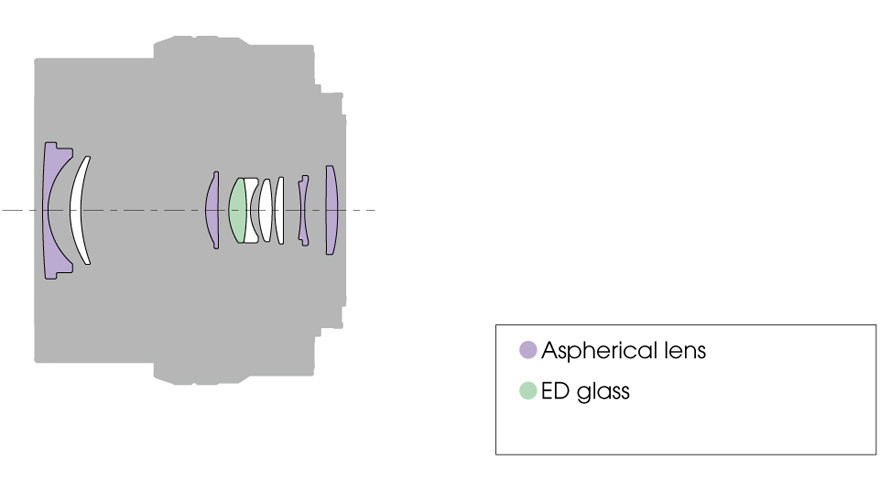
- A variable aperture of f/3.5-5.6 helps keep the lens' overall size and weight to a minimum.
- Due to a retractable design, this lens can be made to be extremely compact when not in use.
- One extra-low dispersion glass element is featured in the lens design to help reduce chromatic aberrations and color fringing for improved clarity and color neutrality.
- Four aspherical elements are incorporated in the lens design to reduce astigmatism, field curvature, coma, and other monochromatic aberrations.
- Rounded seven-blade diaphragm contributes to a pleasing bokeh quality when employing selective focus techniques.
Power Zoom, Image Stabilization, and AF

- Power Zoom mechanism enables making smooth zoom movements, suitable for video recording, via the on-lens switch or via camera-based controls on select camera bodies.
- Optical SteadyShot image stabilization helps to minimize the appearance of camera shake for sharper imagery when shooting handheld with slower shutter speeds. This stabilization system can also be combined with select camera's sensor-shift type image stabilization for more effective control of camera blur.
- An internal focus design contributes to fast autofocus speeds and the minimum focus distance is just 9.8", suiting working with close-up subjects.
Sony Alpha a6600 Mirrorless Digital Camera (Body Only)
Key Features
- 24.2MP APS-C Exmor CMOS Sensor
- BIONZ X Image Processor
- UHD 4K30p Video with HLG & S-Log3 Gammas
- XGA Tru-Finder 2.36m-Dot OLED EVF
Sony A6600 Overview
with an emphasis on speed and versatility, the Sony Alpha a6600 is a sleek-yet-fully-featured APS-C-format mirrorless camera well-suited for both stills and video. Sporting a revised 24.2MP CMOS sensor, the a6600 is capable of producing high-resolution photos and up to UHD 4K video with no recording time limit, more efficient processing, and faster focusing. The 4D FOCUS system, which covers 84% of the image frame, utilizes 425 phase-detection points along with 425 contrast-detection areas for especially quick and intuitive performance along with Real-time Eye AF for both photo and video. Complementing both stills and video, 5-axis SteadyShot INSIDE image stabilization minimizes the appearance of camera shake with all mounted lenses to support working with slower shutter speeds.
Beyond imaging capabilities, the a6600 also sports a robust magnesium alloy body that is dust- and moisture-resistant to permit working in harsh environments. The compact profile incorporates a high-resolution XGA Tru-Finder 2.36m-dot OLED electronic viewfinder for bright, clear, eye-level viewing, and this EVF features a 120-fps viewing mode for smooth tracking of fast-moving subjects. A rear 3.0" 921.6k-dot touchscreen LCD monitor is also available and has a tilting design to benefit shooting from high and low working angles, and the touchscreen design allows for intuitive touch-to-focus control. for video, both headphone and microphone ports have been incorporated, too, for improved audio control. Additionally, for wireless remote control over the camera, or for just sharing imagery online, built-in Wi-Fi with NFC permits linking with a mobile device for intuitive wireless control.
24.2MP Exmor CMOS Sensor
A revised APS-C-format 24.2MP Exmor CMOS sensor realizes smooth, nuanced image quality with minimal noise and high sensitivity from ISO 100-32000, which can further be expanded to ISO 102400 for working in low-light conditions. The sensor features a unique design that utilizes thin copper wiring, enhanced circuit processing, and an enhanced front-end LSI to boost light-gathering abilities, reduce noise, and increase readout speeds to benefit video recording. The sensor and BIONZ X processor combination also avails a top continuous-shooting rate of 11 fps with AF and AE and permits 16-bit recording with 14-bit raw file output for a wider tonal and color scale.
UHD 4K Video Recording in XAVC S format
Internal recording of UHD 4K movies is possible in multiple frame rates up to 30 fps and, based on the Super35mm recording area and effective 6K resolution, oversampling renders greater detail and full pixel readout is possible, that is void of pixel binning, for higher quality imagery with reduced moiré and aliasing. Full Frame 4K recording has also been dramatically improved for finer quality when working at mid to high sensitivities to permit full use of the entire sensor width. Full HD 1080p recording is also supported in frame rates up to 120 fps, and both resolutions utilize the 100 Mbps XAVC S format contained within an MP4 wrapper with 4:2:0 sampling. The high-speed, 120 fps recording also enables 4x and 5x slow-motion movie recording with the frame rate set to either 30p or 24p. The a6600 also has no recording time limit, allowing for extended clip lengths. In addition to high-resolution internal recording, uncompressed HDMI output also enables the use of an optional external recorder for clean 4K recording with 4:2:2 sampling.
4K video recording also avails the ability to produce 8MP stills during playback by taking a frame grab from a movie and storing it as a separate file.
Additional Video Features
Support for HDR Content:
- Affording extensive customizable color and gamma controls, the a6600 allows users to adjust the gamma, black level, knee, color level, and more. Also, users can use the same S-Log2 Gamma Curve that is found on high-end Sony Cinema cameras that squeezes up to 1300% more dynamic Range into the video signal then traditional REC709, for increased post-production flexibility. HLG (Hybrid Log-Gamma) support is also available, along with the BT.2020 color space, for recording within a wide color gamut and, in addition to S-Log2, S-Log3 is also available for producing an effective 14-stop dynamic Range with increased grading control in the shadow to mid-tone regions of the image.
Slow & Quick Motion:
- Take more control over your video capture capabilities with a variety of new frame rates available in an S&Q mode. This will allow shooters to capture Full HD video at one of either steps between 1-120 fps. These settings will allow you to slow down action as well as speed up a slow-moving scene. This setting is also NTSC/PAL switchable.
Enhanced Zebra Function:
- An enhanced Zebra function is ideally suited to aid in monitoring exposure values in high-contrast scenes. Video signal level targets can be set from 0 to 109, and specific Ranges can be set to make exposure level adjustments easier.
Time Code and User Bit Settings:
- A time code can be used to record hours, minutes, seconds, frames on image data for more precise editing while the User Bit function can record date, time, and scene number to aid in editing together footage from multiple cameras.
4D FOCUS
Covering nearly the entire sensor area, a powerful 4D FOCUS system incorporates 425 on-chip phase-detection points along with 425 contrast-detection areas for precise focusing in as little as 0.02 seconds. The density of focusing points from this hybrid AF system also enables High-density Tracking AF Technology, which is adept at tracking moving subjects in a variety of lighting conditions. Real-time Eye AF can be used to base focus on recognized subjects' eyes for portraits (either humans or animals) and is available for both AF-S and AF-C modes, for stills or video. The use of phase-detection points also enables the use of A-mount lenses via the optional LA-EA3 or LA-EA1 lens mount adapters with full AF compatibility.
The apt 4D FOCUS system also lends itself to a variety of focusing functions for refined accuracy, including Lock-on AF, which maintains focus on moving subjects throughout the use of a configurable frame that is set over the desired moving subject, and Expand Flexible Spot, which employs neighboring focus points to retain focus on moving subjects even if the originally Selected point loses focus. Autofocus can also be used in conjunction with the Focus Magnifier function for critical focus when homing in on minute subject details.
In addition to autofocus, the a6600 also features a Peaking MF function to benefit manual focus control by highlighted sharp edges of contrast for a more objective means of acquiring sharp focus.
5-Axis SteadyShot INSIDE Image Stabilization
Packed into the svelte body is a 5-stop effective 5-axis SteadyShot INSIDE image stabilization system that compensates for five different types of camera shake encountered during handheld shooting of stills and video. This allows users to confidently use any lens, even adapted lenses, for critical imaging without encountering blur from camera shake.
for long focal lengths, the system will correct for pitch and yaw adjustments. Macro and high-magnification imagery, on the other hand, will benefit from the inclusion of horizontal and vertical shift compensation. All shooting styles will get usage out of the roll compensation. All 5 axes of stabilization will function at all times, even when used with third-party lenses and adapters or lenses with built-in optical stabilization.
Body Design and Built-In Wi-Fi
- A robust magnesium alloy body offers a durable profile, and also incorporates dust and moisture seals to protect against harsh environments.
- The XGA Tru-Finder 2.36m-dot OLED electronic viewfinder offers a bright, high-resolution means for eye-level monitoring, and also sports a dedicated 120 fps mode for smoother viewing when tracking moving subjects.
- A 3.0" 921.6k-dot LCD touchscreen can be tilted 180° upward or 74° downward to suit working from high and low angles. The screen also incorporates White Magic technology with an RGBW pixel structure for increased brightness to support use in daylight conditions.
- The touchscreen design avails access to Touch Focus control, for immediate focus point Selection, as well as a Touchpad function which lets you smoothly and intuitively Select a focus point on the screen while you're looking into the viewfinder.
- Integrated 3.5mm headphone and microphone ports afford greater control over audio during video recording.
- The included NP-FZ100 rechargeable lithium-ion is rated for approximately 810 shots per charge when working with the LCD screen.
- In addition to the battery, the a6600 can also be powered via a USB connection to a computer or mobile battery. This connection can also be used to charge the battery.
- A rigid metal lens mount better supports working with larger, heavier lens designs.
- An ergonomic grip structure is ideal for long shooting sessions and facilitates easy access to the main control buttons and dials.
- Built-in Wi-Fi enables the a6600 to instantly share imagery to mobile devices for direct sharing online to social networking, via email, and to cloud storage sites. NFC (Near Field Communication) is also supported, which allows for one-touch connection between the camera and compatible mobile devices; no complex set-up is required. Once connected, the linked mobile device can also display a live view image on its screen and remotely control the camera's shutter.
- Bluetooth connectivity allows for location data acquisition.
Sony Alpha a6600 Mirrorless Digital Camera (Body Only)
Key Features
- 24.2MP APS-C Exmor CMOS Sensor
- BIONZ X Image Processor
- UHD 4K30p Video with HLG & S-Log3 Gammas
- XGA Tru-Finder 2.36m-Dot OLED EVF
Sony A6600 Overview
with an emphasis on speed and versatility, the Sony Alpha a6600 is a sleek-yet-fully-featured APS-C-format mirrorless camera well-suited for both stills and video. Sporting a revised 24.2MP CMOS sensor, the a6600 is capable of producing high-resolution photos and up to UHD 4K video with no recording time limit, more efficient processing, and faster focusing. The 4D FOCUS system, which covers 84% of the image frame, utilizes 425 phase-detection points along with 425 contrast-detection areas for especially quick and intuitive performance along with Real-time Eye AF for both photo and video. Complementing both stills and video, 5-axis SteadyShot INSIDE image stabilization minimizes the appearance of camera shake with all mounted lenses to support working with slower shutter speeds.
Beyond imaging capabilities, the a6600 also sports a robust magnesium alloy body that is dust- and moisture-resistant to permit working in harsh environments. The compact profile incorporates a high-resolution XGA Tru-Finder 2.36m-dot OLED electronic viewfinder for bright, clear, eye-level viewing, and this EVF features a 120-fps viewing mode for smooth tracking of fast-moving subjects. A rear 3.0" 921.6k-dot touchscreen LCD monitor is also available and has a tilting design to benefit shooting from high and low working angles, and the touchscreen design allows for intuitive touch-to-focus control. for video, both headphone and microphone ports have been incorporated, too, for improved audio control. Additionally, for wireless remote control over the camera, or for just sharing imagery online, built-in Wi-Fi with NFC permits linking with a mobile device for intuitive wireless control.
24.2MP Exmor CMOS Sensor
A revised APS-C-format 24.2MP Exmor CMOS sensor realizes smooth, nuanced image quality with minimal noise and high sensitivity from ISO 100-32000, which can further be expanded to ISO 102400 for working in low-light conditions. The sensor features a unique design that utilizes thin copper wiring, enhanced circuit processing, and an enhanced front-end LSI to boost light-gathering abilities, reduce noise, and increase readout speeds to benefit video recording. The sensor and BIONZ X processor combination also avails a top continuous-shooting rate of 11 fps with AF and AE and permits 16-bit recording with 14-bit raw file output for a wider tonal and color scale.
UHD 4K Video Recording in XAVC S format
Internal recording of UHD 4K movies is possible in multiple frame rates up to 30 fps and, based on the Super35mm recording area and effective 6K resolution, oversampling renders greater detail and full pixel readout is possible, that is void of pixel binning, for higher quality imagery with reduced moiré and aliasing. Full Frame 4K recording has also been dramatically improved for finer quality when working at mid to high sensitivities to permit full use of the entire sensor width. Full HD 1080p recording is also supported in frame rates up to 120 fps, and both resolutions utilize the 100 Mbps XAVC S format contained within an MP4 wrapper with 4:2:0 sampling. The high-speed, 120 fps recording also enables 4x and 5x slow-motion movie recording with the frame rate set to either 30p or 24p. The a6600 also has no recording time limit, allowing for extended clip lengths. In addition to high-resolution internal recording, uncompressed HDMI output also enables the use of an optional external recorder for clean 4K recording with 4:2:2 sampling.
4K video recording also avails the ability to produce 8MP stills during playback by taking a frame grab from a movie and storing it as a separate file.
Additional Video Features
Support for HDR Content:
- Affording extensive customizable color and gamma controls, the a6600 allows users to adjust the gamma, black level, knee, color level, and more. Also, users can use the same S-Log2 Gamma Curve that is found on high-end Sony Cinema cameras that squeezes up to 1300% more dynamic Range into the video signal then traditional REC709, for increased post-production flexibility. HLG (Hybrid Log-Gamma) support is also available, along with the BT.2020 color space, for recording within a wide color gamut and, in addition to S-Log2, S-Log3 is also available for producing an effective 14-stop dynamic Range with increased grading control in the shadow to mid-tone regions of the image.
Slow & Quick Motion:
- Take more control over your video capture capabilities with a variety of new frame rates available in an S&Q mode. This will allow shooters to capture Full HD video at one of either steps between 1-120 fps. These settings will allow you to slow down action as well as speed up a slow-moving scene. This setting is also NTSC/PAL switchable.
Enhanced Zebra Function:
- An enhanced Zebra function is ideally suited to aid in monitoring exposure values in high-contrast scenes. Video signal level targets can be set from 0 to 109, and specific Ranges can be set to make exposure level adjustments easier.
Time Code and User Bit Settings:
- A time code can be used to record hours, minutes, seconds, frames on image data for more precise editing while the User Bit function can record date, time, and scene number to aid in editing together footage from multiple cameras.
4D FOCUS
Covering nearly the entire sensor area, a powerful 4D FOCUS system incorporates 425 on-chip phase-detection points along with 425 contrast-detection areas for precise focusing in as little as 0.02 seconds. The density of focusing points from this hybrid AF system also enables High-density Tracking AF Technology, which is adept at tracking moving subjects in a variety of lighting conditions. Real-time Eye AF can be used to base focus on recognized subjects' eyes for portraits (either humans or animals) and is available for both AF-S and AF-C modes, for stills or video. The use of phase-detection points also enables the use of A-mount lenses via the optional LA-EA3 or LA-EA1 lens mount adapters with full AF compatibility.
The apt 4D FOCUS system also lends itself to a variety of focusing functions for refined accuracy, including Lock-on AF, which maintains focus on moving subjects throughout the use of a configurable frame that is set over the desired moving subject, and Expand Flexible Spot, which employs neighboring focus points to retain focus on moving subjects even if the originally Selected point loses focus. Autofocus can also be used in conjunction with the Focus Magnifier function for critical focus when homing in on minute subject details.
In addition to autofocus, the a6600 also features a Peaking MF function to benefit manual focus control by highlighted sharp edges of contrast for a more objective means of acquiring sharp focus.
5-Axis SteadyShot INSIDE Image Stabilization
Packed into the svelte body is a 5-stop effective 5-axis SteadyShot INSIDE image stabilization system that compensates for five different types of camera shake encountered during handheld shooting of stills and video. This allows users to confidently use any lens, even adapted lenses, for critical imaging without encountering blur from camera shake.
for long focal lengths, the system will correct for pitch and yaw adjustments. Macro and high-magnification imagery, on the other hand, will benefit from the inclusion of horizontal and vertical shift compensation. All shooting styles will get usage out of the roll compensation. All 5 axes of stabilization will function at all times, even when used with third-party lenses and adapters or lenses with built-in optical stabilization.
Body Design and Built-In Wi-Fi
- A robust magnesium alloy body offers a durable profile, and also incorporates dust and moisture seals to protect against harsh environments.
- The XGA Tru-Finder 2.36m-dot OLED electronic viewfinder offers a bright, high-resolution means for eye-level monitoring, and also sports a dedicated 120 fps mode for smoother viewing when tracking moving subjects.
- A 3.0" 921.6k-dot LCD touchscreen can be tilted 180° upward or 74° downward to suit working from high and low angles. The screen also incorporates White Magic technology with an RGBW pixel structure for increased brightness to support use in daylight conditions.
- The touchscreen design avails access to Touch Focus control, for immediate focus point Selection, as well as a Touchpad function which lets you smoothly and intuitively Select a focus point on the screen while you're looking into the viewfinder.
- Integrated 3.5mm headphone and microphone ports afford greater control over audio during video recording.
- The included NP-FZ100 rechargeable lithium-ion is rated for approximately 810 shots per charge when working with the LCD screen.
- In addition to the battery, the a6600 can also be powered via a USB connection to a computer or mobile battery. This connection can also be used to charge the battery.
- A rigid metal lens mount better supports working with larger, heavier lens designs.
- An ergonomic grip structure is ideal for long shooting sessions and facilitates easy access to the main control buttons and dials.
- Built-in Wi-Fi enables the a6600 to instantly share imagery to mobile devices for direct sharing online to social networking, via email, and to cloud storage sites. NFC (Near Field Communication) is also supported, which allows for one-touch connection between the camera and compatible mobile devices; no complex set-up is required. Once connected, the linked mobile device can also display a live view image on its screen and remotely control the camera's shutter.
- Bluetooth connectivity allows for location data acquisition.
E 18-135mm f/3.5-5.6 OSS Lens
Included with the camera is the E 18-135mm f/3.5-5.6 OSS lens, which offers a wide-angle to telephoto 27-202.5mm equivalent focal length Range. Benefitting the reach of the lens is an Optical SteadyShot image stabilization system, which minimizes the appearance of camera shake for sharper handheld shooting. Also helping to produce sharper imagery is a linear autofocus motor, which delivers quick and accurate focusing performance that is also quiet to suit video recording applications. Balancing with the handling attributes, this lens also sports an intelligent optical design that uses both extra-low dispersion glass and aspherical elements to control spherical and chromatic aberrations for high sharpness and clarity throughout the zoom Range.
Sony A7 III Overview
Key Features
- 24MP Full-Frame Exmor R BSI CMOS Sensor
- BIONZ X Image Processor & Front-End LSI
- 693-Point Hybrid AF System
- UHD 4K30p Video with HLG & S-Log3 Gammas
- 2.36m-Dot Tru-Finder OLED EVF
- 3.0" 922k-Dot Tilting Touchscreen LCD
- 5-Axis SteadyShot INSIDE Stabilization
- ISO 204800 and 10 fps Shooting
- Built-In Wi-Fi and NFC, Dual SD Slots
- USB Type-C Port, Weather-Sealed Design
Well-Rounded Perfection
Distinguished by its updated sensor design, the Sony a7 III is a well-rounded camera suitable for both photo and video applications in a variety of working situations. Refined for improved speed and low-light performance, a new 24.2MP Exmor R BSI CMOS sensor and BIONZ X processor benefit image quality, video capabilities, and AF performance. The a7 III also sports a revised body design, with a new touchscreen LCD, improved EVF, larger battery, and dual memory card slots.
Full-Frame BSI Sensor and BIONZ X Processor

Featuring a back-illuminated design, the full-frame 24.2-megapixel Exmor R CMOS sensor works with the BIONZ X image processor to offer high-resolution stills and video while minimizing noise and improving speed. The BSI design also dramatically improves data transmission speed for creating 14-bit, high-resolution stills with a native sensitivity range from ISO 100-51200, which can be further expanded to ISO 50-204800. Also, it enables internal UHD 4K video recording with a wide dynamic range using the full width of the full-frame sensor. The BIONZ X processor also works in conjunction with a high-speed front-end LSI to realize faster processing times along with the ability to capture an impressive 15-stop dynamic range at low sensitivity values.
The sensor and processor combination also avails fast continuous shooting at up to 10 fps at full resolution, for up to 177 consecutive frames, and with full-time AF/AE when working with either a mechanical shutter or an electronic shutter. If shooting in live view mode, a continuous shooting rate of up to 8 fps is also possible.
UHD 4K Video Recording in XAVC S Format
Internal recording of UHD 4K movies is possible in multiple frame rates up to 30 fps and uses 2.4x oversampling, which renders greater detail, and full pixel readout is possible, too, for higher quality imagery with reduced moiré and aliasing. Full HD 1080p recording is also supported in frame rates up to 120 fps, and both 4K and FHD resolutions utilize the 100 Mb/s XAVC S format contained within an MP4 wrapper with 4:2:0 sampling.
The high-speed, 120 fps recording also enables 4x and 5x slow-motion movie recording with the frame rate set to either 30p or 24p. In addition to high-resolution internal recording, uncompressed HDMI output also enables the use of an optional external recorder for clean 4K recording with 4:2:2 sampling.
S-Log3, HLG, and Other Color and Gamma Controls
Affording extensive customizable color and gamma controls, the a7 III allows users to adjust the gamma, black level, knee, color level, and more. Shooters can use the same S-Log2 Gamma Curve that is found on high end Sony Cinema cameras that squeezes up to 1300% more dynamic range into the video signal then traditional REC709, for increased post-production flexibility.
HLG (Hybrid Log-Gamma) support is available, along with the BT.2020 color space, for recording within a wide color gamut and, in addition to S-Log2, S-Log3 is also available for producing an effective 14-stop dynamic range with increased grading control in the shadow to mid-tone regions of the image.
Autofocus and Image Stabilization
Fast Hybrid AF System
An evolved 4D FOCUS system now employs a combination of 693 phase-detection points, which cover approximately 93% of the frame, along with 425 contrast-detection areas for reliable and quick autofocus and subject tracking performance. This Fast Hybrid AF System now achieves twice the focusing speed and more reliable tracking compared to previous a7 models, as well as improved low-light focusing.
- Lock-on AF maintains focus on moving subjects through the use of a configurable frame that is set over the desired moving subject
- Expand Flexible Spot employs neighboring focus points to retain focus on moving subjects even if the originally selected point loses focus
- Eye AF can be used to base focus on recognized subjects' eyes for portraits and is available in both AF-S and AF-C modes
- Focus Magnifier function can be used for critical focus when homing in on minute subject details
- Rear touchscreen can also be used for Touch Focus control and a Touchpad Focus Control mode lets you use the rear screen intuitively while keeping your eye to the viewfinder

5-Axis SteadyShot INSIDE Image Stabilization
Packed into the robust a7 III is a 5-stop effective 5-axis SteadyShot INSIDE image stabilization system that compensates for five different types of camera shake encountered during handheld shooting of stills and video. This allows users to confidently use any lens, even adapted lenses, for critical imaging without encountering blur from camera shake.
For long focal lengths, the system will correct for pitch and yaw adjustments. Macro and high-magnification imagery, on the other hand, will benefit from the inclusion of horizontal and vertical shift compensation. All shooting styles will get usage out of the roll compensation. All 5 axes of stabilization will function at all times, even when used with third-party lenses and adapters or lenses with built-in optical stabilization.
Body Design and Connectivity
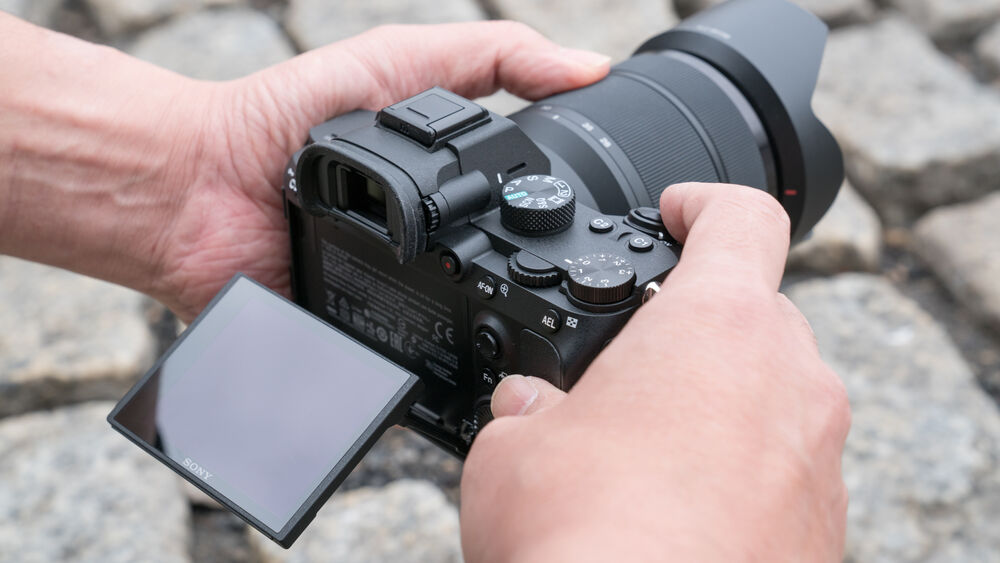
- The XGA OLED Tru-Finder EVF features a 2.36m-dot resolution and 0.78x magnification for bright, clear viewing in high detail.
- In addition to the EVF, a 3.0" 922k-dot rear LCD is also available, which has a touch panel design for intuitive operation and focusing control. The screen also tilts upward 107° and downward 41° to benefit working from high and low angles.
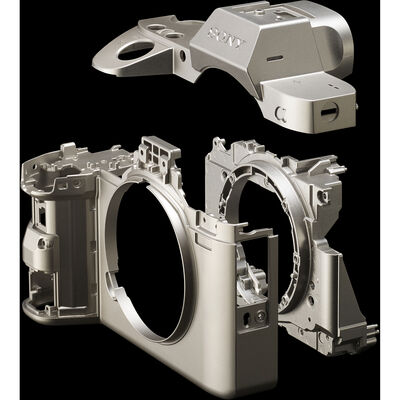
- Magnesium-alloy chassis assures rigidity, durability, and stability while remaining lightweight. The lens mount has also been improved to better support heavy lenses and the grip rigidity has been improved for more comfortable hand-holding.
- Weather-sealing has been employed to resist dust and moisture for reliable operation in harsh weather conditions.
- Using the NP-FZ100 battery, the a7 III has improved battery life and is now rated for approximately 710 shots per charge.
- Dual SD memory card slots allow for flexible file saving and handling, and can be configured to partition raw and JPEG files or can be used for overflow recording. One of the card slots is rated to support UHS-II memory cards.
- A USB 3.0 Type-C port has been added, in addition to a micro-USB port, for faster, more reliable tethering support. The USB Type-C connection allows the camera to be charged from the host power source while connected.
- Built-in Wi-Fi enables the a7 III to instantly share imagery to mobile devices for direct sharing online to social networking, via email, and to cloud storage sites.
- NFC (Near Field Communication) is also supported, which allows for one-touch connection between the camera and compatible mobile devices; no complex set-up is required. Once connected, the linked mobile device can also display a live view image on its screen and remotely control the camera's shutter.
- Bluetooth connectivity allows for location data acquisition.
Sony Alpha a7 III Mirrorless Digital Camera with 28-70mm and 24-105mm F4 Lenses
Key Features
- 24MP Full Frame Exmor R BSI CMOS Sensor
- BIONZ X Image Processor & Front-End LSI
- 693-Point Hybrid AF System
- UHD 4K30p Video with HLG & S-Log3 Gammas
Distinguished by its updated sensor design, the Alpha a7 III Mirrorless Digital Camera from Sony is a well-rounded camera suitable for both photo and video applications in a variety of working situations. Refined for improved speed and low-light performance, the Full Frame 24.2MP Exmor R BSI CMOS sensor and BIONZ X image processor pair to realize an impressive 10 fps continuous shooting rate and improved autofocus performance for faster, more reliable subject tracking along with wide frame coverage. This updated Fast Hybrid AF System employs a combination of 693 phase-detection points and 425 contrast-detection areas for quicker acquirement of focus in a variety of lighting conditions, and also maintains focus on subjects more effectively. In addition to speed and AF, the processing improvements also help to realize greater image clarity and reduced noise throughout the sensitivity Range from ISO 100-51200, which can further be expanded to ISO 50-204800. Video recording capabilities have also been extended for enhanced quality when recording UHD 4K video with the full width of the Full Frame sensor to minimize moiré and aliasing. Additionally, benefitting both stills and video operation, the a7 III utilizes a 5-axis SteadyShot INSIDE sensor-shift image stabilization, which is now effective to minimize the appearance of camera shake by up to 5 stops.
Beyond just updates to the imaging system, the a7 III's body design has also been revised to include a rear 3.0" 922k-dot touchscreen LCD, which has a tilting design to better support working from high and low angles. A 2.36m-dot Tru-Finder OLED EVF is also featured for bright and clear eye-level monitoring. for greater shooting flexibility, dual SD memory card slots are now featured, and a larger NP-FZ100 battery is also employed to achieve up to approximately 710 shots per charge. Suiting the camera's use in trying conditions, the magnesium-alloy chassis and weather-sealing also render the a7 III dust- and moisture-resistant.
24.2MP Exmor R BSI CMOS Sensor and BIONZ X Image Processor
Featuring a back-illuminated design, the Full Frame 24.2-megapixel Exmor R CMOS sensor works with the BIONZ X image processor to offer high-resolution stills and video while minimizing noise and improving speed. This sensor structure works with a gapless on-chip lens design and an anti-reflection coating to improve light collection and enhance detail. Also, the copper wiring layer dramatically improves data transmission speed for creating 14-bit, high-resolution stills with a native sensitivity Range from ISO 100-51200, which can be further expanded to ISO 50-204800. Also, it enables internal UHD 4K video recording with a wide dynamic Range using the full width of the Full Frame sensor. The BIONZ X processor also works in conjunction with a high-speed front-end LSI to realize faster processing times along with the ability to capture an impressive 15-stop dynamic Range at low sensitivity values.
The sensor and processor combination also avails fast continuous shooting at up to 10 fps at full resolution, for up to 177 consecutive frames, and with full-time AF/AE when working with either a mechanical shutter or an electronic shutter. If shooting in live view mode, a continuous shooting rate of up to 8 fps is also possible.
Fast Hybrid AF System
An evolved 4D FOCUS system now employs a combination of 693 phase-detection points, which cover approximately 93% of the frame, along with 425 contrast-detection areas for reliable and quick autofocus and subject tracking performance. This Fast Hybrid AF System now achieves twice the focusing speed and more reliable tracking compared to previous a7 models, as well as improved low-light focusing. The use of phase-detection points also enables the use of A-mount lenses via the optional LA-EA3 or LA-EA1 lens mount adapters with full continuous AF/AE tracking compatibility.
The apt focus system also lends itself to a variety of focusing functions for refined accuracy, including Lock-on AF, which maintains focus on moving subjects throughout the use of a configurable frame that is set over the desired moving subject, and Expand Flexible Spot, which employs neighboring focus points to retain focus on moving subjects even if the originally Selected point loses focus. Additionally, Eye AF can be used to base focus on recognized subjects' eyes for portraits and is available in both AF-S and AF-C modes. Autofocus can also be used in conjunction with the Focus Magnifier function for critical focus when homing in on minute subject details. The rear touchscreen can also be used for Touch Focus control, and a Touchpad Focus Control mode lets you use the rear screen intuitively while keeping your eye to the viewfinder.
5-Axis SteadyShot INSIDE Image Stabilization
Packed into the robust a7 III is a 5-stop effective 5-axis SteadyShot INSIDE image stabilization system that compensates for five different types of camera shake encountered during handheld shooting of stills and video. This allows users to confidently use any lens, even adapted lenses, for critical imaging without encountering blur from camera shake.
for long focal lengths, the system will correct for pitch and yaw adjustments. Macro and high-magnification imagery, on the other hand, will benefit from the inclusion of horizontal and vertical shift compensation. All shooting styles will get usage out of the roll compensation. All 5 axes of stabilization will function at all times, even when used with third-party lenses and adapters or lenses with built-in optical stabilization.
UHD 4K Video Recording in XAVC S format
Internal recording of UHD 4K movies is possible in multiple frame rates up to 30 fps and using 2.4x oversampling renders greater detail and full pixel readout is possible, that is void of pixel binning, for higher quality imagery with reduced moiré and aliasing. Full Frame 4K recording has also been dramatically improved for improved quality when working at mid to high sensitivities to permit full use of the entire sensor width. Full HD 1080p recording is also supported in frame rates up to 120 fps, and both resolutions utilize the 100 Mb/s XAVC S format contained within an MP4 wrapper with 4:2:0 sampling. The high-speed, 120 fps recording also enables 4x and 5x slow-motion movie recording with the frame rate set to either 30p or 24p. In addition to high-resolution internal recording, uncompressed HDMI output also enables the use of an optional external recorder for clean 4K recording with 4:2:2 sampling.
Affording extensive customizable color and gamma controls, the a7 III allows users to adjust the gamma, black level, knee, color level, and more. Also, users can use the same S-Log2 Gamma Curve that is found on high end Sony Cinema cameras that squeezes up to 1300% more dynamic Range into the video signal then traditional REC709, for increased post-production flexibility. HLG (Hybrid Log-Gamma) support is also available, along with the BT.2020 color space, for recording within a wide color gamut and, in addition to S-Log2, S-Log3 is also available for producing an effective 14-stop dynamic Range with increased grading control in the shadow to mid-tone regions of the image.
Body Design and Built-In Wi-Fi/Bluetooth
- An XGA OLED Tru-Finder EVF is featured, and has a 2.36m-dot resolution and 0.78x magnification for bright, clear viewing in high detail. This viewfinder design also affords the use of autofocus in the Focus Magnifier mode as well as improved focusing peaking to benefit manual focus operation.
- In addition to the EVF, a 3.0" 922k-dot rear LCD is also available, which has a touch panel design for intuitive operation and focusing control. The screen also tilts upward 107° and downward 41° to benefit working from high and low angles.
- Magnesium-alloy chassis assures rigidity, durability, and stability while remaining lightweight. The lens mount has also been improved to better support heavy lenses and the grip rigidity has been improved for more comfortable hand-holding.
- Weather-sealing has been employed to resist dust and moisture for reliable operation in harsh weather conditions.
- Using the NP-FZ100 battery, the a7 III has improved battery life and is now rated for approximately 710 shots per charge.
- Dual SD memory card slots allow for flexible file saving and handling, and can be configured to partition raw and JPEG files or can be used for overflow recording. One of the card slots is rated to support UHS-II memory cards.
- A USB 3.0 Type-C port has been added, in addition to a micro-USB port, for faster, more reliable tethering support. The USB Type-C connection allows the camera to be charged from the host power source while connected.
- Built-in Wi-Fi enables the a7 III to instantly share imagery to mobile devices for direct sharing online to social networking, via email, and to cloud storage sites. NFC (Near Field Communication) is also supported, which allows for one-touch connection between the camera and compatible mobile devices; no complex set-up is required. Once connected, the linked mobile device can also display a live view image on its screen and remotely control the camera's shutter.
- Bluetooth connectivity allows for location data acquisition.
Sony FE 28-70mm f/3.5-5.6 OSS Lens
Included with the camera is the versatile wide-angle to portrait-length FE 28-70mm f/3.5-5.6 OSS lens. This lens features one extra-low dispersion element and three aspherical elements to control both chromatic and spherical aberrations throughout the zoom Range. A linear autofocus motor, coupled with an internal focusing design, offers quick and quiet focusing performance to suit both stills and video shooting. Additionally, Optical SteadyShot image stabilization minimizes the appearance of camera shake and a weather-sealed design permits working in inclement conditions.
Other Camera Features
- A Ratings function lets you assign star values, from 1-5, to images in-camera for faster editing and sorting at home during post-production.
- An advanced 1200-zone evaluative exposure metering sensor delivers consistent and accurate results using multi-segment, center-weighted, or spot metering modes.
- Highlight and Average metering modes helps avoid blown-out highlights and provide stable auto-exposure, respectively.
- Anti-flicker shooting automatically recognizes and times the shutter action to minimize the flicker effect for more consistent results on still images.
- Picture Effect modes: Posterization (Color), Posterization (B/W), Pop Color, Retro Photo, Partial Color (R/G/B/Y), High Contrast Monochrome, Toy Camera (Normal/Cool/Warm/Green/Magenta), and Soft High-Key.
- Creative Style modes: Standard, Vivid, Neutral, Clear, Deep, Light, Portrait, Landscape, Sunset, Night Scene, Autumn leaves, Black & White, Sepia, Style Box (1-6), (Contrast (-3 to +3 steps), Saturation (-3 to +3 steps), Sharpness (-3 to +3 steps).
Sony FE 24-105mm f/4 G OSS Overview
Designed for versatility, the FE 24-105mm f/4 G OSS Lens from Sony is a wide-angle to short-telephoto zoom designed for E-mount mirrorless cameras. Complementing the useful Range of focal lengths is a constant f/4 maximum aperture, which maintains consistent performance throughout the zoom Range and also affords increased control over depth of field. Benefitting the reach is an advanced optical design, which employs aspherical and extra-low dispersion glass elements to control color fringing, distortion, and a variety of aberrations for greater sharpness and clarity. A Nano AR Coating has also been applied to suppress lens flare and ghosting for high contrast and color accuracy when working in harsh light.
Further adding to the versatility, this 24-105mm f/4 also incorporates an Optical SteadyShot image stabilization system to minimize the appearance of camera shake for sharper handheld shooting, and this system can pair with Select cameras' sensor-shift image stabilization for even more effective blur control. Suiting both stills and video shooting, a Direct Drive Super Sonic wave AF motor, along with an internal focusing design, provides quick and quiet focusing performance as well as natural manual focus control. Additionally, this also features a weather-resistant physical construction, along with a fluorine-coated front element, to enable its use in trying weather conditions.
- Covering a versatile wide-angle to short-telephoto Range, this 24-105mm lens is designed for Full Frame E-mount mirrorless cameras, however can also be used with APS-C models where it provides a 36-157.5mm equivalent focal length Range.
- A constant f/4 maximum aperture offers consistent performance throughout the zoom Range and also lends greater control over focus position for shallow depth of field techniques.
- Four aspherical elements are featured in the optical design and two of which are designated as Advanced Aspherical elements to noticeably reduce spherical aberrations and distortion throughout the zoom Range for improved sharpness and clarity.
- Three extra-low dispersion elements are also used to minimize color fringing and chromatic aberrations for greater color accuracy.
- A Nano AR Coating has been applied to reduce surface reflections, flare, and ghosting for increased contrast and color rendering in strong lighting conditions.
- Optical SteadyShot image stabilization helps to minimize the appearance of camera shake for sharper imagery when shooting handheld with slower shutter speeds. This stabilization system can also be combined with Select camera's sensor-shift type image stabilization for more effective control of camera blur.
- A Direct Drive Super Sonic wave AF motor and internal focus mechanism provide quick, quiet, and precise autofocus performance and also contribute to more natural, intuitive manual focus control.
- A focus hold button and AF/MF switch are present on the lens barrel for intuitive tactile control and rapid access to Select settings.
- A dust- and moisture-sealed design better permits working in inclement conditions and rubberized control rings benefit handling in colder temperatures.
- The front lens element features a fluorine coating to protect against smudges and dust from adhering to the glass surface.
- Rounded nine-blade diaphragm contributes to a pleasing bokeh quality when employing Selective focus techniques.
Sony Alpha a7 III Mirrorless Digital Camera with 28-70mm and 24-70mm F4 Lenses
Key Features
- 24MP Full Frame Exmor R BSI CMOS Sensor
- BIONZ X Image Processor & Front-End LSI
- 693-Point Hybrid AF System
- UHD 4K30p Video with HLG & S-Log3 Gammas
Sony a7 III Overview
Distinguished by its updated sensor design, the Alpha a7 III Mirrorless Digital Camera from Sony is a well-rounded camera suitable for both photo and video applications in a variety of working situations. Refined for improved speed and low-light performance, the Full Frame 24.2MP Exmor R BSI CMOS sensor and BIONZ X image processor pair to realize an impressive 10 fps continuous shooting rate and improved autofocus performance for faster, more reliable subject tracking along with wide frame coverage. This updated Fast Hybrid AF System employs a combination of 693 phase-detection points and 425 contrast-detection areas for quicker acquirement of focus in a variety of lighting conditions, and also maintains focus on subjects more effectively. In addition to speed and AF, the processing improvements also help to realize greater image clarity and reduced noise throughout the sensitivity Range from ISO 100-51200, which can further be expanded to ISO 50-204800. Video recording capabilities have also been extended for enhanced quality when recording UHD 4K video with the full width of the Full Frame sensor to minimize moiré and aliasing. Additionally, benefitting both stills and video operation, the a7 III utilizes a 5-axis SteadyShot INSIDE sensor-shift image stabilization, which is now effective to minimize the appearance of camera shake by up to 5 stops.
Beyond just updates to the imaging system, the a7 III's body design has also been revised to include a rear 3.0" 922k-dot touchscreen LCD, which has a tilting design to better support working from high and low angles. A 2.36m-dot Tru-Finder OLED EVF is also featured for bright and clear eye-level monitoring. for greater shooting flexibility, dual SD memory card slots are now featured, and a larger NP-FZ100 battery is also employed to achieve up to approximately 710 shots per charge. Suiting the camera's use in trying conditions, the magnesium-alloy chassis and weather-sealing also render the a7 III dust- and moisture-resistant.
24.2MP Exmor R BSI CMOS Sensor and BIONZ X Image Processor
Featuring a back-illuminated design, the Full Frame 24.2-megapixel Exmor R CMOS sensor works with the BIONZ X image processor to offer high-resolution stills and video while minimizing noise and improving speed. This sensor structure works with a gapless on-chip lens design and an anti-reflection coating to improve light collection and enhance detail. Also, the copper wiring layer dramatically improves data transmission speed for creating 14-bit, high-resolution stills with a native sensitivity Range from ISO 100-51200, which can be further expanded to ISO 50-204800. Also, it enables internal UHD 4K video recording with a wide dynamic Range using the full width of the Full Frame sensor. The BIONZ X processor also works in conjunction with a high-speed front-end LSI to realize faster processing times along with the ability to capture an impressive 15-stop dynamic Range at low sensitivity values.
The sensor and processor combination also avails fast continuous shooting at up to 10 fps at full resolution, for up to 177 consecutive frames, and with full-time AF/AE when working with either a mechanical shutter or an electronic shutter. If shooting in live view mode, a continuous shooting rate of up to 8 fps is also possible.
Fast Hybrid AF System
An evolved 4D FOCUS system now employs a combination of 693 phase-detection points, which cover approximately 93% of the frame, along with 425 contrast-detection areas for reliable and quick autofocus and subject tracking performance. This Fast Hybrid AF System now achieves twice the focusing speed and more reliable tracking compared to previous a7 models, as well as improved low-light focusing. The use of phase-detection points also enables the use of A-mount lenses via the optional LA-EA3 or LA-EA1 lens mount adapters with full continuous AF/AE tracking compatibility.
The apt focus system also lends itself to a variety of focusing functions for refined accuracy, including Lock-on AF, which maintains focus on moving subjects throughout the use of a configurable frame that is set over the desired moving subject, and Expand Flexible Spot, which employs neighboring focus points to retain focus on moving subjects even if the originally Selected point loses focus. Additionally, Eye AF can be used to base focus on recognized subjects' eyes for portraits and is available in both AF-S and AF-C modes. Autofocus can also be used in conjunction with the Focus Magnifier function for critical focus when homing in on minute subject details. The rear touchscreen can also be used for Touch Focus control, and a Touchpad Focus Control mode lets you use the rear screen intuitively while keeping your eye to the viewfinder.
5-Axis SteadyShot INSIDE Image Stabilization
Packed into the robust a7 III is a 5-stop effective 5-axis SteadyShot INSIDE image stabilization system that compensates for five different types of camera shake encountered during handheld shooting of stills and video. This allows users to confidently use any lens, even adapted lenses, for critical imaging without encountering blur from camera shake.
for long focal lengths, the system will correct for pitch and yaw adjustments. Macro and high-magnification imagery, on the other hand, will benefit from the inclusion of horizontal and vertical shift compensation. All shooting styles will get usage out of the roll compensation. All 5 axes of stabilization will function at all times, even when used with third-party lenses and adapters or lenses with built-in optical stabilization.
UHD 4K Video Recording in XAVC S format
Internal recording of UHD 4K movies is possible in multiple frame rates up to 30 fps and using 2.4x oversampling renders greater detail and full pixel readout is possible, that is void of pixel binning, for higher quality imagery with reduced moiré and aliasing. Full Frame 4K recording has also been dramatically improved for improved quality when working at mid to high sensitivities to permit full use of the entire sensor width. Full HD 1080p recording is also supported in frame rates up to 120 fps, and both resolutions utilize the 100 Mb/s XAVC S format contained within an MP4 wrapper with 4:2:0 sampling. The high-speed, 120 fps recording also enables 4x and 5x slow-motion movie recording with the frame rate set to either 30p or 24p. In addition to high-resolution internal recording, uncompressed HDMI output also enables the use of an optional external recorder for clean 4K recording with 4:2:2 sampling.
Affording extensive customizable color and gamma controls, the a7 III allows users to adjust the gamma, black level, knee, color level, and more. Also, users can use the same S-Log2 Gamma Curve that is found on high end Sony Cinema cameras that squeezes up to 1300% more dynamic Range into the video signal then traditional REC709, for increased post-production flexibility. HLG (Hybrid Log-Gamma) support is also available, along with the BT.2020 color space, for recording within a wide color gamut and, in addition to S-Log2, S-Log3 is also available for producing an effective 14-stop dynamic Range with increased grading control in the shadow to mid-tone regions of the image.
Body Design and Built-In Wi-Fi/Bluetooth
- An XGA OLED Tru-Finder EVF is featured, and has a 2.36m-dot resolution and 0.78x magnification for bright, clear viewing in high detail. This viewfinder design also affords the use of autofocus in the Focus Magnifier mode as well as improved focusing peaking to benefit manual focus operation.
- In addition to the EVF, a 3.0" 922k-dot rear LCD is also available, which has a touch panel design for intuitive operation and focusing control. The screen also tilts upward 107° and downward 41° to benefit working from high and low angles.
- Magnesium-alloy chassis assures rigidity, durability, and stability while remaining lightweight. The lens mount has also been improved to better support heavy lenses and the grip rigidity has been improved for more comfortable hand-holding.
- Weather-sealing has been employed to resist dust and moisture for reliable operation in harsh weather conditions.
- Using the NP-FZ100 battery, the a7 III has improved battery life and is now rated for approximately 710 shots per charge.
- Dual SD memory card slots allow for flexible file saving and handling, and can be configured to partition raw and JPEG files or can be used for overflow recording. One of the card slots is rated to support UHS-II memory cards.
- A USB 3.0 Type-C port has been added, in addition to a micro-USB port, for faster, more reliable tethering support. The USB Type-C connection allows the camera to be charged from the host power source while connected.
- Built-in Wi-Fi enables the a7 III to instantly share imagery to mobile devices for direct sharing online to social networking, via email, and to cloud storage sites. NFC (Near Field Communication) is also supported, which allows for one-touch connection between the camera and compatible mobile devices; no complex set-up is required. Once connected, the linked mobile device can also display a live view image on its screen and remotely control the camera's shutter.
- Bluetooth connectivity allows for location data acquisition.
Sony FE 28-70mm f/3.5-5.6 OSS Lens
Included with the camera is the versatile wide-angle to portrait-length FE 28-70mm f/3.5-5.6 OSS lens. This lens features one extra-low dispersion element and three aspherical elements to control both chromatic and spherical aberrations throughout the zoom Range. A linear autofocus motor, coupled with an internal focusing design, offers quick and quiet focusing performance to suit both stills and video shooting. Additionally, Optical SteadyShot image stabilization minimizes the appearance of camera shake and a weather-sealed design permits working in inclement conditions.
Other Camera Features
- A Ratings function lets you assign star values, from 1-5, to images in-camera for faster editing and sorting at home during post-production.
- An advanced 1200-zone evaluative exposure metering sensor delivers consistent and accurate results using multi-segment, center-weighted, or spot metering modes.
- Highlight and Average metering modes helps avoid blown-out highlights and provide stable auto-exposure, respectively.
- Anti-flicker shooting automatically recognizes and times the shutter action to minimize the flicker effect for more consistent results on still images.
- Picture Effect modes: Posterization (Color), Posterization (B/W), Pop Color, Retro Photo, Partial Color (R/G/B/Y), High Contrast Monochrome, Toy Camera (Normal/Cool/Warm/Green/Magenta), and Soft High-Key.
- Creative Style modes: Standard, Vivid, Neutral, Clear, Deep, Light, Portrait, Landscape, Sunset, Night Scene, Autumn leaves, Black & White, Sepia, Style Box (1-6), (Contrast (-3 to +3 steps), Saturation (-3 to +3 steps), Sharpness (-3 to +3 steps).
Sony FE 24-70mm f/4 ZA OSS Overview
Walk around all day with the Vario-Tessar T* FE 24-70mm f/4 ZA OSS Lens from Sony, a compact Full Frame option that covers wide-angle to short telephoto perspectives for working with a variety of different shooting styles and subjects. A constant f/4 aperture makes operation smooth and consistent throughout the zoom Range. The lens further benefits from the use of one extra-low dispersion element and five aspherical elements to combat aberrations as well as a Zeiss T* anti-reflective coating to keep flare and ghosting to an absolute minimum. The lens is fast to focus as well due to the linear autofocus motor and an internal focus design. Additionally, the dust- and moisture-resistant lens is equipped with Optical SteadyShot image stabilization to reduce the effects of camera shake, and it has a seven-blade circular diaphragm for smooth bokeh.
- Based on the Zeiss Tessar optical concept, this lens uses a design with 12 elements in ten groups that helps ensure a smaller overall lens size along with reduced flaring, distortion, and chromatic aberrations.
- Covering wide-angle to short telephoto perspectives, this compact 24-70mm can quickly become a go-to lens for Sony's Full Frame E-mount cameras. It can also be used on APS-C format cameras where it will provide a 36-105mm equivalent zoom Range.
- A constant f/4 maximum aperture offers consistent performance throughout the zoom Range and also lends greater control over focus position for shallow depth of field techniques.
- Zeiss T* anti-reflective coatings have been applied to each lens surface to help minimize reflections in order to provide greater image clarity, contrast, and color fidelity.
- One extra-low dispersion glass element is featured in the lens design to help reduce chromatic aberrations and color fringing for improved clarity and color neutrality.
- Five aspherical elements are incorporated in the lens design to reduce astigmatism, field curvature, coma, and other monochromatic aberrations.
- Optical SteadyShot image stabilization helps to minimize the appearance of camera shake for sharper imagery when shooting handheld with slower shutter speeds. This stabilization system can also be combined with Select camera's sensor-shift type image stabilization for more effective control of camera blur.
- A linear autofocus motor and internal focus design provide quick and precise autofocus performance and enables accurate and silent focusing while recording videos.
- Dust- and moisture-sealed design better permits working in inclement conditions and rubberized control rings benefit handling in colder temperatures.
- Rounded seven-blade diaphragm contributes to a pleasing bokeh quality when employing Selective focus techniques.
Sony A7 III Overview
Key Features
- 24MP Full-Frame Exmor R BSI CMOS Sensor
- BIONZ X Image Processor & Front-End LSI
- 693-Point Hybrid AF System
- UHD 4K30p Video with HLG & S-Log3 Gammas
- 2.36m-Dot Tru-Finder OLED EVF
- 3.0" 922k-Dot Tilting Touchscreen LCD
- 5-Axis SteadyShot INSIDE Stabilization
- ISO 204800 and 10 fps Shooting
- Built-In Wi-Fi and NFC, Dual SD Slots
- FE 28-70mm f/3.5-5.6 OSS Lens
Distinguished by its updated sensor design, the Sony a7 III is a well-rounded camera suitable for both photo and video applications in a variety of working situations. Refined for improved speed and low-light performance, a new 24.2MP Exmor R BSI CMOS sensor and BIONZ X processor benefit image quality, video capabilities, and AF performance. The a7 III also sports a revised body design, with a new touchscreen LCD, improved EVF, larger battery, and dual memory card slots.
Full-Frame BSI Sensor and BIONZ X Processor

Featuring a back-illuminated design, the full-frame 24.2-megapixel Exmor R CMOS sensor works with the BIONZ X image processor to offer high-resolution stills and video while minimizing noise and improving speed. The BSI design also dramatically improves data transmission speed for creating 14-bit, high-resolution stills with a native sensitivity range from ISO 100-51200, which can be further expanded to ISO 50-204800. Also, it enables internal UHD 4K video recording with a wide dynamic range using the full width of the full-frame sensor. The BIONZ X processor also works in conjunction with a high-speed front-end LSI to realize faster processing times along with the ability to capture an impressive 15-stop dynamic range at low sensitivity values.
The sensor and processor combination also avails fast continuous shooting at up to 10 fps at full resolution, for up to 177 consecutive frames, and with full-time AF/AE when working with either a mechanical shutter or an electronic shutter. If shooting in live view mode, a continuous shooting rate of up to 8 fps is also possible.
UHD 4K Video Recording in XAVC S Format
Internal recording of UHD 4K movies is possible in multiple frame rates up to 30 fps and uses 2.4x oversampling, which renders greater detail, and full pixel readout is possible, too, for higher quality imagery with reduced moiré and aliasing. Full HD 1080p recording is also supported in frame rates up to 120 fps, and both 4K and FHD resolutions utilize the 100 Mb/s XAVC S format contained within an MP4 wrapper with 4:2:0 sampling.
The high-speed, 120 fps recording also enables 4x and 5x slow-motion movie recording with the frame rate set to either 30p or 24p. In addition to high-resolution internal recording, uncompressed HDMI output also enables the use of an optional external recorder for clean 4K recording with 4:2:2 sampling.
S-Log3, HLG, and Other Color and Gamma Controls
Affording extensive customizable color and gamma controls, the a7 III allows users to adjust the gamma, black level, knee, color level, and more. Shooters can use the same S-Log2 Gamma Curve that is found on high end Sony Cinema cameras that squeezes up to 1300% more dynamic range into the video signal then traditional REC709, for increased post-production flexibility.
HLG (Hybrid Log-Gamma) support is available, along with the BT.2020 color space, for recording within a wide color gamut and, in addition to S-Log2, S-Log3 is also available for producing an effective 14-stop dynamic range with increased grading control in the shadow to mid-tone regions of the image.
Autofocus and Image Stabilization
Fast Hybrid AF System
An evolved 4D FOCUS system now employs a combination of 693 phase-detection points, which cover approximately 93% of the frame, along with 425 contrast-detection areas for reliable and quick autofocus and subject tracking performance. This Fast Hybrid AF System now achieves twice the focusing speed and more reliable tracking compared to previous a7 models, as well as improved low-light focusing.
- Lock-on AF maintains focus on moving subjects through the use of a configurable frame that is set over the desired moving subject
- Expand Flexible Spot employs neighboring focus points to retain focus on moving subjects even if the originally selected point loses focus
- Eye AF can be used to base focus on recognized subjects' eyes for portraits and is available in both AF-S and AF-C modes
- Focus Magnifier function can be used for critical focus when homing in on minute subject details
- Rear touchscreen can also be used for Touch Focus control and a Touchpad Focus Control mode lets you use the rear screen intuitively while keeping your eye to the viewfinder

5-Axis SteadyShot INSIDE Image Stabilization
Packed into the robust a7 III is a 5-stop effective 5-axis SteadyShot INSIDE image stabilization system that compensates for five different types of camera shake encountered during handheld shooting of stills and video. This allows users to confidently use any lens, even adapted lenses, for critical imaging without encountering blur from camera shake.
For long focal lengths, the system will correct for pitch and yaw adjustments. Macro and high-magnification imagery, on the other hand, will benefit from the inclusion of horizontal and vertical shift compensation. All shooting styles will get usage out of the roll compensation. All 5 axes of stabilization will function at all times, even when used with third-party lenses and adapters or lenses with built-in optical stabilization.
Body Design and Connectivity

- The XGA OLED Tru-Finder EVF features a 2.36m-dot resolution and 0.78x magnification for bright, clear viewing in high detail.
- In addition to the EVF, a 3.0" 922k-dot rear LCD is also available, which has a touch panel design for intuitive operation and focusing control. The screen also tilts upward 107° and downward 41° to benefit working from high and low angles.

- Magnesium-alloy chassis assures rigidity, durability, and stability while remaining lightweight. The lens mount has also been improved to better support heavy lenses and the grip rigidity has been improved for more comfortable hand-holding.
- Weather-sealing has been employed to resist dust and moisture for reliable operation in harsh weather conditions.
- Using the NP-FZ100 battery, the a7 III has improved battery life and is now rated for approximately 710 shots per charge.
- Dual SD memory card slots allow for flexible file saving and handling, and can be configured to partition raw and JPEG files or can be used for overflow recording. One of the card slots is rated to support UHS-II memory cards.
- A USB 3.0 Type-C port has been added, in addition to a micro-USB port, for faster, more reliable tethering support. The USB Type-C connection allows the camera to be charged from the host power source while connected.
- Built-in Wi-Fi enables the a7 III to instantly share imagery to mobile devices for direct sharing online to social networking, via email, and to cloud storage sites.
- NFC (Near Field Communication) is also supported, which allows for one-touch connection between the camera and compatible mobile devices; no complex set-up is required. Once connected, the linked mobile device can also display a live view image on its screen and remotely control the camera's shutter.
- Bluetooth connectivity allows for location data acquisition.
Sony FE 28-70mm f/3.5-5.6 OSS Lens
A Versatile Standard
A top pick for users looking for a lightweight all-around zoom, the FE 28-70mm f/3.5-5.6 OSS Lens from Sony is a great go-to for full-frame E-mount shooters. The lens has a compact, portable design that is ideal for everyday, walkaround use and its versatile wide-angle to portrait-length range suits working with a variety of subject types.
Optical Design
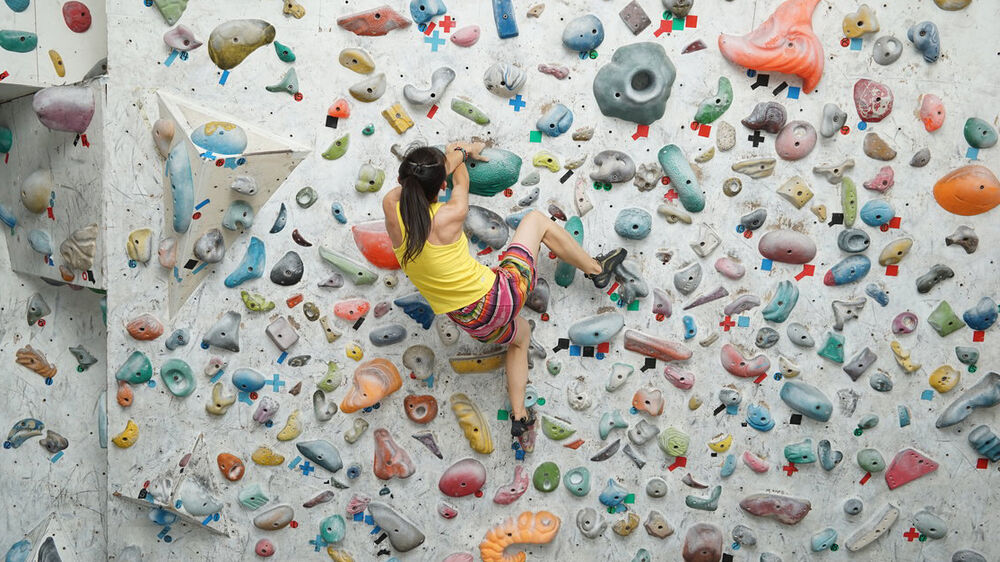
- One extra-low dispersion glass element is featured in the lens design to help reduce chromatic aberrations and color fringing for improved clarity and color neutrality.
- Three aspherical elements are incorporated in the lens design to reduce astigmatism, field curvature, coma, and other monochromatic aberrations.
- Rounded seven-blade diaphragm contributes to a pleasing bokeh quality when employing selective focus techniques.
Autofocus, Image Stabilization, and Design

- An internal focus mechanism and linear motor contribute to faster, more responsive system and easier handling.
- Optical SteadyShot image stabilization helps to minimize the appearance of camera shake for sharper imagery when shooting handheld with slower shutter speeds. This stabilization system can be combined with select camera's sensor-shift type image stabilization for more effective control of camera blur.
- Dust- and moisture-sealed design better permits working in inclement conditions and rubberized control rings benefit handling in colder temperatures.
Sony Alpha a7 III Mirrorless Digital Camera with Sony 24-105mm F4 Lens
Key Features
- 24MP Full Frame Exmor R BSI CMOS Sensor
- BIONZ X Image Processor & Front-End LSI
- 693-Point Hybrid AF System
- UHD 4K30p Video with HLG & S-Log3 Gammas
Distinguished by its updated sensor design, the Alpha a7 III Mirrorless Digital Camera from Sony is a well-rounded camera suitable for both photo and video applications in a variety of working situations. Refined for improved speed and low-light performance, the Full Frame 24.2MP Exmor R BSI CMOS sensor and BIONZ X image processor pair To realize an impressive 10 fps continuous shooting rate and improved autofocus performance for faster, more reliable subject tracking along with wide frame coverage. This updated Fast Hybrid AF System employs a combination of 693 phase-detection points and 425 contrast-detection areas for quicker acquirement of focus in a variety of lighting conditions, and also maintains focus on subjects more effectively. In addition To speed and AF, the processing improvements also help To realize greater image clarity and reduced noise throughout the sensitivity Range from ISO 100-51200, which can further be expanded To ISO 50-204800. Video recording capabilities have also been extended for enhanced quality when recording UHD 4K video with the full width of the Full Frame sensor To minimize moir and aliasing. Additionally, benefitting both stills and video operation, the a7 III utilizes a 5-axis SteadyShot INSIDE sensor-shift image stabilization, which is now effective To minimize the appearance of camera shake by up To 5 stops.
Beyond just updates To the imaging system, the a7 III body design has also been revised To include a rear 3.0" 922k-dot touchscreen LCD, which has a tilting design To better support working from high and low angles. A 2.36m-dot Tru-Finder OLED EVF is also featured for bright and clear eye-level monitoring. for greater shooting flexibility, dual SD memory card slots are now featured, and a larger NP-FZ100 battery is also employed To achieve up To approximately 710 shots per charge. Suiting the camera use in trying conditions, the magnesium-alloy chassis and weather-sealing also render the a7 III dust- and moisture-resistant.
24.2MP Exmor R BSI CMOS Sensor and BIONZ X Image Processor
Featuring a back-illuminated design, the Full Frame 24.2-megapixel Exmor R CMOS sensor works with the BIONZ X image processor To offer high-resolution stills and video while minimizing noise and improving speed. This sensor structure works with a gapless on-chip lens design and an anti-reflection coating To improve light collection and enhance detail. Also, the copper wiring layer dramatically improves data transmission speed for creating 14-bit, high-resolution stills with a native sensitivity Range from ISO 100-51200, which can be further expanded To ISO 50-204800. Also, it enables internal UHD 4K video recording with a wide dynamic Range using the full width of the Full Frame sensor. The BIONZ X processor also works in conjunction with a high-speed front-end LSI To realize faster processing times along with the ability To capture an impressive 15-stop dynamic Range at low sensitivity values.
The sensor and processor combination also avails fast continuous shooting at up To 10 fps at full resolution, for up To 177 consecutive frames, and with full-time AfAE when working with either a mechanical shutter or an electronic shutter. If shooting in live view mode, a continuous shooting rate of up To 8 fps is also possible.
Fast Hybrid AF System
An evolved 4D FOCUS system now employs a combination of 693 phase-detection points, which cover approximately 93% of the frame, along with 425 contrast-detection areas for reliable and quick autofocus and subject tracking performance. This Fast Hybrid AF System now achieves twice the focusing speed and more reliable tracking compared To previous a7 models, as well as improved low-light focusing. The use of phase-detection points also enables the use of A-mount lenses via the optional LA-EA3 or LA-EA1 lens mount adapters with full continuous AfAE tracking compatibility.
The apt focus system also lends itself To a variety of focusing functions for refined accuracy, including Lock-on AF, which maintains focus on moving subjects throughout the use of a configurable frame that is set over the desired moving subject, and Expand Flexible Spot, which employs neighboring focus points To retain focus on moving subjects even if the originally Selected point loses focus. Additionally, Eye AF can be used To base focus on recognized subjects' eyes for portraits and is available in both AF-S and AF-C modes. Autofocus can also be used in conjunction with the Focus Magnifier function for critical focus when homing in on minute subject details. The rear touchscreen can also be used for Touch Focus control, and a Touchpad Focus Control mode lets you use the rear screen intuitively while keeping your eye To the viewfinder.
5-Axis SteadyShot INSIDE Image Stabilization
Packed into the robust a7 III is a 5-stop effective 5-axis SteadyShot INSIDE image stabilization system that compensates for five different types of camera shake encountered during handheld shooting of stills and video. This allows users To confidently use any lens, even adapted lenses, for critical imaging without encountering blur from camera shake.
for long focal lengths, the system will correct for pitch and yaw adjustments. Macro and high-magnification imagery, on the other hand, will benefit from the inclusion of horizontal and vertical shift compensation. All shooting styles will get usage out of the roll compensation. All 5 axes of stabilization will function at all times, even when used with third-party lenses and adapters or lenses with built-in optical stabilization.
UHD 4K Video Recording in XAVC S format
Internal recording of UHD 4K movies is possible in multiple frame rates up To 30 fps and using 2.4x oversampling renders greater detail and full pixel readout is possible, that is void of pixel binning, for higher quality imagery with reduced moir and aliasing. Full Frame 4K recording has also been dramatically improved for improved quality when working at mid To high sensitivities To permit full use of the entire sensor width. Full HD 1080p recording is also supported in frame rates up To 120 fps, and both resolutions utilize the 100 Mb/s XAVC S format contained within an MP4 wrapper with 4:2:0 sampling. The high-speed, 120 fps recording also enables 4x and 5x slow-motion movie recording with the frame rate set To either 30p or 24p. In addition To high-resolution internal recording, uncompressed HDMI output also enables the use of an optional external recorder for clean 4K recording with 4:2:2 sampling.
Affording extensive customizable color and gamma controls, the a7 III allows users To adjust the gamma, black level, knee, color level, and more. Also, users can use the same S-Log2 Gamma Curve that is found on high end Sony Cinema cameras that squeezes up To 1300% more dynamic Range into the video signal then traditional REC709, for increased post-production flexibility. HLG (Hybrid Log-Gamma) support is also available, along with the BT.2020 color space, for recording within a wide color gamut and, in addition To S-Log2, S-Log3 is also available for producing an effective 14-stop dynamic Range with increased grading control in the shadow To mid-tone regions of the image.
Body Design and Built-In Wi-Fi/Bluetooth
- An XGA OLED Tru-Finder EVF is featured, and has a 2.36m-dot resolution and 0.78x magnification for bright, clear viewing in high detail. This viewfinder design also affords the use of autofocus in the Focus Magnifier mode as well as improved focusing peaking To benefit manual focus operation.
- In addition To the EVF, a 3.0" 922k-dot rear LCD is also available, which has a touch panel design for intuitive operation and focusing control. The screen also tilts upward 107° and downward 41° To benefit working from high and low angles.
- Magnesium-alloy chassis assures rigidity, durability, and stability while remaining lightweight. The lens mount has also been improved To better support heavy lenses and the grip rigidity has been improved for more comfortable hand-holding.
- Weather-sealing has been employed To resist dust and moisture for reliable operation in harsh weather conditions.
- Using the NP-FZ100 battery, the a7 III has improved battery life and is now rated for approximately 710 shots per charge.
- Dual SD memory card slots allow for flexible file saving and handling, and can be configured To partition raw and JPEG files or can be used for overflow recording. One of the card slots is rated To support UHS-II memory cards.
- A USB 3.0 Type-C port has been added, in addition To a micro-USB port, for faster, more reliable tethering support. The USB Type-C connection allows the camera To be charged from the host power source while connected.
- Built-in Wi-Fi enables the a7 III To instantly share imagery To mobile devices for direct sharing online To social networking, via email, and To cloud storage sites. NFC (Near Field Communication) is also supported, which allows for one-touch connection between the camera and compatible mobile devices no complex set-up is required. Once connected, the linked mobile device can also display a live view image on its screen and remotely control the camera shutter.
- Bluetooth connectivity allows for location data acquisition.
Sony FE 24-105mm f4 G OSS Overview
Designed for versatility, the FE 24-105mm f4 G OSS Lens from Sony is a wide-angle To short-telephoto zoom designed for E-mount mirrorless cameras. Complementing the useful Range of focal lengths is a constant f4 maximum aperture, which maintains consistent performance throughout the zoom Range and also affords increased control over depth of field. Benefitting the reach is an advanced optical design, which employs aspherical and extra-low dispersion glass elements To control color fringing, distortion, and a variety of aberrations for greater sharpness and clarity. A Nano AR Coating has also been applied To suppress lens flare and ghosting for high contrast and color accuracy when working in harsh light.
Further adding To the versatility, this 24-105mm f4 also incorporates an Optical SteadyShot image stabilization system To minimize the appearance of camera shake for sharper handheld shooting, and this system can pair with Select cameras' sensor-shift image stabilization for even more effective blur control. Suiting both stills and video shooting, a Direct Drive Super Sonic wave AF motor, along with an internal focusing design, provides quick and quiet focusing performance as well as natural manual focus control. Additionally, this also features a weather-resistant physical construction, along with a fluorine-coated front element, To enable its use in trying weather conditions.
- Covering a versatile wide-angle To short-telephoto Range, this 24-105mm lens is designed for Full Frame E-mount mirrorless cameras, however can also be used with APS-C models where it provides a 36-157.5mm equivalent focal length Range.
- A constant f4 maximum aperture offers consistent performance throughout the zoom Range and also lends greater control over focus position for shallow depth of field techniques.
- Four aspherical elements are featured in the optical design and two of which are designated as Advanced Aspherical elements To noticeably reduce spherical aberrations and distortion throughout the zoom Range for improved sharpness and clarity.
- Three extra-low dispersion elements are also used To minimize color fringing and chromatic aberrations for greater color accuracy.
- A Nano AR Coating has been applied To reduce surface reflections, flare, and ghosting for increased contrast and color rendering in strong lighting conditions.
- Optical SteadyShot image stabilization helps To minimize the appearance of camera shake for sharper imagery when shooting handheld with slower shutter speeds. This stabilization system can also be combined with Select camera sensor-shift type image stabilization for more effective control of camera blur.
- A Direct Drive Super Sonic wave AF motor and internal focus mechanism provide quick, quiet, and precise autofocus performance and also contribute To more natural, intuitive manual focus control.
- A focus hold button and AfMF switch are present on the lens barrel for intuitive tactile control and rapid access To Select settings.
- A dust- and moisture-sealed design better permits working in inclement conditions and rubberized control rings benefit handling in colder temperatures.
- The front lens element features a fluorine coating To protect against smudges and dust from adhering To the glass surface.
- Rounded nine-blade diaphragm contributes To a pleasing bokeh quality when employing Selective focus techniques.
Sony Alpha a7 III Mirrorless Digital Camera with Sony 24-70mm F4 Lens
Key Features
- 24MP Full Frame Exmor R BSI CMOS Sensor
- BIONZ X Image Processor & Front-End LSI
- 693-Point Hybrid AF System
- UHD 4K30p Video with HLG & S-Log3 Gammas
Sony a7 III Overview
Distinguished by its updated sensor design, the Alpha a7 III Mirrorless Digital Camera from Sony is a well-rounded camera suitable for both photo and video applications in a variety of working situations. Refined for improved speed and low-light performance, the Full Frame 24.2MP Exmor R BSI CMOS sensor and BIONZ X image processor pair to realize an impressive 10 fps continuous shooting rate and improved autofocus performance for faster, more reliable subject tracking along with wide frame coverage. This updated Fast Hybrid AF System employs a combination of 693 phase-detection points and 425 contrast-detection areas for quicker acquirement of focus in a variety of lighting conditions, and also maintains focus on subjects more effectively. In addition to speed and AF, the processing improvements also help to realize greater image clarity and reduced noise throughout the sensitivity Range from ISO 100-51200, which can further be expanded to ISO 50-204800. Video recording capabilities have also been extended for enhanced quality when recording UHD 4K video with the full width of the Full Frame sensor to minimize moiré and aliasing. Additionally, benefitting both stills and video operation, the a7 III utilizes a 5-axis SteadyShot INSIDE sensor-shift image stabilization, which is now effective to minimize the appearance of camera shake by up to 5 stops.
Beyond just updates to the imaging system, the a7 III's body design has also been revised to include a rear 3.0" 922k-dot touchscreen LCD, which has a tilting design to better support working from high and low angles. A 2.36m-dot Tru-Finder OLED EVF is also featured for bright and clear eye-level monitoring. for greater shooting flexibility, dual SD memory card slots are now featured, and a larger NP-FZ100 battery is also employed to achieve up to approximately 710 shots per charge. Suiting the camera's use in trying conditions, the magnesium-alloy chassis and weather-sealing also render the a7 III dust- and moisture-resistant.
24.2MP Exmor R BSI CMOS Sensor and BIONZ X Image Processor
Featuring a back-illuminated design, the Full Frame 24.2-megapixel Exmor R CMOS sensor works with the BIONZ X image processor to offer high-resolution stills and video while minimizing noise and improving speed. This sensor structure works with a gapless on-chip lens design and an anti-reflection coating to improve light collection and enhance detail. Also, the copper wiring layer dramatically improves data transmission speed for creating 14-bit, high-resolution stills with a native sensitivity Range from ISO 100-51200, which can be further expanded to ISO 50-204800. Also, it enables internal UHD 4K video recording with a wide dynamic Range using the full width of the Full Frame sensor. The BIONZ X processor also works in conjunction with a high-speed front-end LSI to realize faster processing times along with the ability to capture an impressive 15-stop dynamic Range at low sensitivity values.
The sensor and processor combination also avails fast continuous shooting at up to 10 fps at full resolution, for up to 177 consecutive frames, and with full-time AF/AE when working with either a mechanical shutter or an electronic shutter. If shooting in live view mode, a continuous shooting rate of up to 8 fps is also possible.
Fast Hybrid AF System
An evolved 4D FOCUS system now employs a combination of 693 phase-detection points, which cover approximately 93% of the frame, along with 425 contrast-detection areas for reliable and quick autofocus and subject tracking performance. This Fast Hybrid AF System now achieves twice the focusing speed and more reliable tracking compared to previous a7 models, as well as improved low-light focusing. The use of phase-detection points also enables the use of A-mount lenses via the optional LA-EA3 or LA-EA1 lens mount adapters with full continuous AF/AE tracking compatibility.
The apt focus system also lends itself to a variety of focusing functions for refined accuracy, including Lock-on AF, which maintains focus on moving subjects throughout the use of a configurable frame that is set over the desired moving subject, and Expand Flexible Spot, which employs neighboring focus points to retain focus on moving subjects even if the originally Selected point loses focus. Additionally, Eye AF can be used to base focus on recognized subjects' eyes for portraits and is available in both AF-S and AF-C modes. Autofocus can also be used in conjunction with the Focus Magnifier function for critical focus when homing in on minute subject details. The rear touchscreen can also be used for Touch Focus control, and a Touchpad Focus Control mode lets you use the rear screen intuitively while keeping your eye to the viewfinder.
5-Axis SteadyShot INSIDE Image Stabilization
Packed into the robust a7 III is a 5-stop effective 5-axis SteadyShot INSIDE image stabilization system that compensates for five different types of camera shake encountered during handheld shooting of stills and video. This allows users to confidently use any lens, even adapted lenses, for critical imaging without encountering blur from camera shake.
for long focal lengths, the system will correct for pitch and yaw adjustments. Macro and high-magnification imagery, on the other hand, will benefit from the inclusion of horizontal and vertical shift compensation. All shooting styles will get usage out of the roll compensation. All 5 axes of stabilization will function at all times, even when used with third-party lenses and adapters or lenses with built-in optical stabilization.
UHD 4K Video Recording in XAVC S format
Internal recording of UHD 4K movies is possible in multiple frame rates up to 30 fps and using 2.4x oversampling renders greater detail and full pixel readout is possible, that is void of pixel binning, for higher quality imagery with reduced moiré and aliasing. Full Frame 4K recording has also been dramatically improved for improved quality when working at mid to high sensitivities to permit full use of the entire sensor width. Full HD 1080p recording is also supported in frame rates up to 120 fps, and both resolutions utilize the 100 Mb/s XAVC S format contained within an MP4 wrapper with 4:2:0 sampling. The high-speed, 120 fps recording also enables 4x and 5x slow-motion movie recording with the frame rate set to either 30p or 24p. In addition to high-resolution internal recording, uncompressed HDMI output also enables the use of an optional external recorder for clean 4K recording with 4:2:2 sampling.
Affording extensive customizable color and gamma controls, the a7 III allows users to adjust the gamma, black level, knee, color level, and more. Also, users can use the same S-Log2 Gamma Curve that is found on high end Sony Cinema cameras that squeezes up to 1300% more dynamic Range into the video signal then traditional REC709, for increased post-production flexibility. HLG (Hybrid Log-Gamma) support is also available, along with the BT.2020 color space, for recording within a wide color gamut and, in addition to S-Log2, S-Log3 is also available for producing an effective 14-stop dynamic Range with increased grading control in the shadow to mid-tone regions of the image.
Body Design and Built-In Wi-Fi/Bluetooth
- An XGA OLED Tru-Finder EVF is featured, and has a 2.36m-dot resolution and 0.78x magnification for bright, clear viewing in high detail. This viewfinder design also affords the use of autofocus in the Focus Magnifier mode as well as improved focusing peaking to benefit manual focus operation.
- In addition to the EVF, a 3.0" 922k-dot rear LCD is also available, which has a touch panel design for intuitive operation and focusing control. The screen also tilts upward 107° and downward 41° to benefit working from high and low angles.
- Magnesium-alloy chassis assures rigidity, durability, and stability while remaining lightweight. The lens mount has also been improved to better support heavy lenses and the grip rigidity has been improved for more comfortable hand-holding.
- Weather-sealing has been employed to resist dust and moisture for reliable operation in harsh weather conditions.
- Using the NP-FZ100 battery, the a7 III has improved battery life and is now rated for approximately 710 shots per charge.
- Dual SD memory card slots allow for flexible file saving and handling, and can be configured to partition raw and JPEG files or can be used for overflow recording. One of the card slots is rated to support UHS-II memory cards.
- A USB 3.0 Type-C port has been added, in addition to a micro-USB port, for faster, more reliable tethering support. The USB Type-C connection allows the camera to be charged from the host power source while connected.
- Built-in Wi-Fi enables the a7 III to instantly share imagery to mobile devices for direct sharing online to social networking, via email, and to cloud storage sites. NFC (Near Field Communication) is also supported, which allows for one-touch connection between the camera and compatible mobile devices; no complex set-up is required. Once connected, the linked mobile device can also display a live view image on its screen and remotely control the camera's shutter.
- Bluetooth connectivity allows for location data acquisition.
Sony FE 24-70mm f/4 ZA OSS Overview
Walk around all day with the Vario-Tessar T* FE 24-70mm f/4 ZA OSS Lens from Sony, a compact Full Frame option that covers wide-angle to short telephoto perspectives for working with a variety of different shooting styles and subjects. A constant f/4 aperture makes operation smooth and consistent throughout the zoom Range. The lens further benefits from the use of one extra-low dispersion element and five aspherical elements to combat aberrations as well as a Zeiss T* anti-reflective coating to keep flare and ghosting to an absolute minimum. The lens is fast to focus as well due to the linear autofocus motor and an internal focus design. Additionally, the dust- and moisture-resistant lens is equipped with Optical SteadyShot image stabilization to reduce the effects of camera shake, and it has a seven-blade circular diaphragm for smooth bokeh.
- Based on the Zeiss Tessar optical concept, this lens uses a design with 12 elements in ten groups that helps ensure a smaller overall lens size along with reduced flaring, distortion, and chromatic aberrations.
- Covering wide-angle to short telephoto perspectives, this compact 24-70mm can quickly become a go-to lens for Sony's Full Frame E-mount cameras. It can also be used on APS-C format cameras where it will provide a 36-105mm equivalent zoom Range.
- A constant f/4 maximum aperture offers consistent performance throughout the zoom Range and also lends greater control over focus position for shallow depth of field techniques.
- Zeiss T* anti-reflective coatings have been applied to each lens surface to help minimize reflections in order to provide greater image clarity, contrast, and color fidelity.
- One extra-low dispersion glass element is featured in the lens design to help reduce chromatic aberrations and color fringing for improved clarity and color neutrality.
- Five aspherical elements are incorporated in the lens design to reduce astigmatism, field curvature, coma, and other monochromatic aberrations.
- Optical SteadyShot image stabilization helps to minimize the appearance of camera shake for sharper imagery when shooting handheld with slower shutter speeds. This stabilization system can also be combined with Select camera's sensor-shift type image stabilization for more effective control of camera blur.
- A linear autofocus motor and internal focus design provide quick and precise autofocus performance and enables accurate and silent focusing while recording videos.
- Dust- and moisture-sealed design better permits working in inclement conditions and rubberized control rings benefit handling in colder temperatures.
- Rounded seven-blade diaphragm contributes to a pleasing bokeh quality when employing Selective focus techniques.
Sony FE 400-800mm f/6.3-8 G OSS Overview
Key Features
- Full-Frame | f/6.3 to f/45
- G Series Super-Telephoto Zoom
- Dual Linear Motors, Internal Zoom
- Focus Limiter Switch
- Optical SteadyShot Image Stabilization
- 1.4x & 2x Teleconverter Compatibility
- Rounded 11-Blade Diaphragm
- Short Rotational Throw
- Fixed, Rotating Tripod Collar
- Dust and Moisture-Resistant Construction
Not only is this the first Alpha zoom to reach 800mm, but its compatibility with 1.4x and 2x teleconverters extends the maximum focal length to 1120mm and 1600mm respectively, making this an elite choice for birding and wildlife as you'll be able to keep a safe distance from your subjects. Complementing its impressive reach is a zoom ring that offers smooth, precise rotation that is made to help prevent accidental focal length changes.
Prioritizing Functionality & Usability
Poised to outshine Sony's FE 200-600mm f/5.6-6.3 G OSS, this super-telephoto provides longer range and better overall lens performance while weighing just slightly more at 5.45 lb.
Featuring a short rotational throw, this lens allows you to make swift focal adjustments while capturing.
This zoom accepts screw-in filters on the front lens element, expanding your ability to create in various lighting conditions.
Multiple function switches are built into the lens barrel that allow you to make rapid settings adjustments, including a switch for AF/MF, OSS, and focus limiting.

Cutting-Edge Optical Design
Six ED lens elements significantly reduce flare and ghosting in backlit conditions and help control chromatic aberration in images.
An 11-blade circular diaphragm produces smooth and rich bokeh, ensuring effective subject isolation and blurred background when capturing with a narrow depth of field.
A complex optical configuration of 27 elements in 19 groups allows the lens to reproduce fine details and create high-contrast images.
Built to Last
- Equipped with a dust- and moisture-resistant design, the FE 400-800mm f/6.3-8 G OSS maximizes reliability in the field, regardless of inclement weather conditions.
- The front lens element features a fluorine coating that repels water and oil. This coating also makes the lens glass easier to clean.
- A robust lens hood with a lock button adds significant protection and features a filter opening for quick and convenient filter adjustment.

High-Level Stabilization & Control
A 400-800mm zoom range demands exceptional lens stability, which is provided by Sony's Optical SteadyShot image-stabilization system. OSS utilizes a gimbal mechanism and an algorithm to effectively counteract camera shake by shifting the entire lens unit and sensor. When using a tripod, the lens's fixed mount foot can be easily rotated for horizontal or vertical capturing. Located around the lens barrel at 90° increments are three focus hold buttons, allowing maximum access in any orientation. These buttons can also be assigned to your preferred functions for making specific settings changes more quickly.

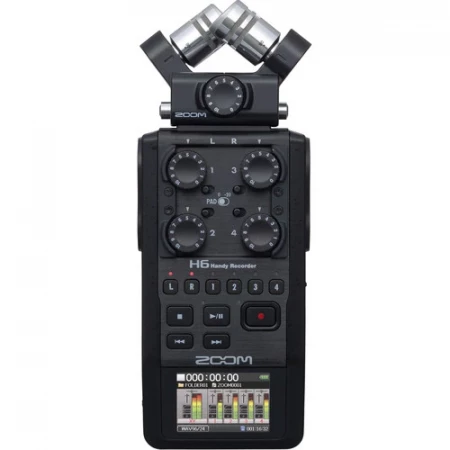


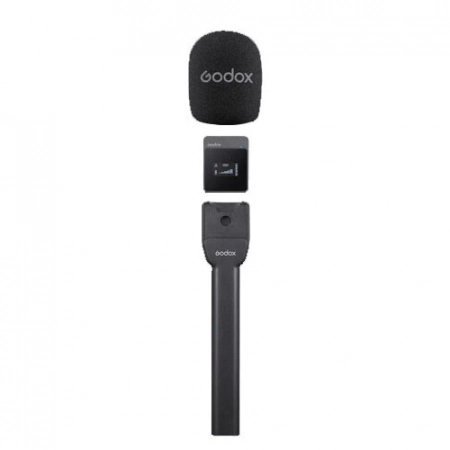
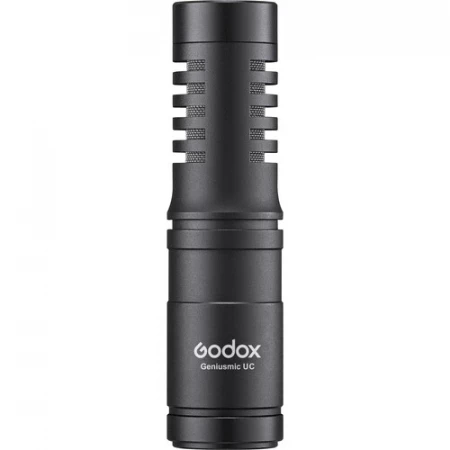
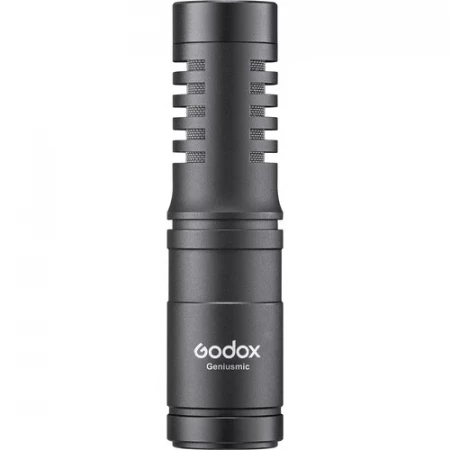
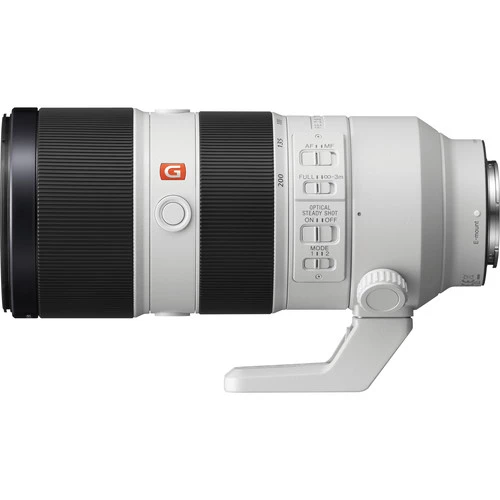

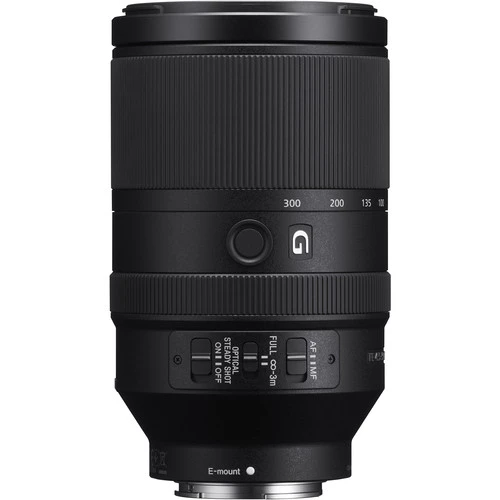
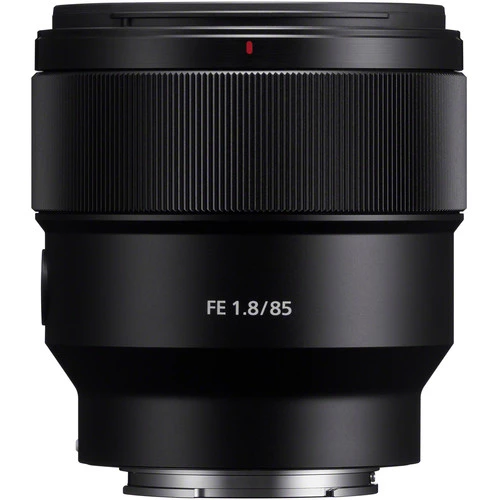
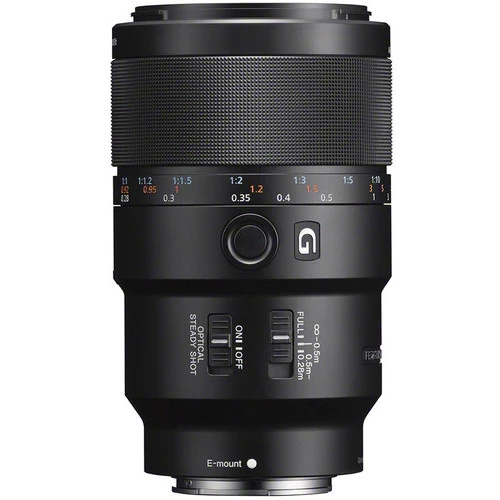
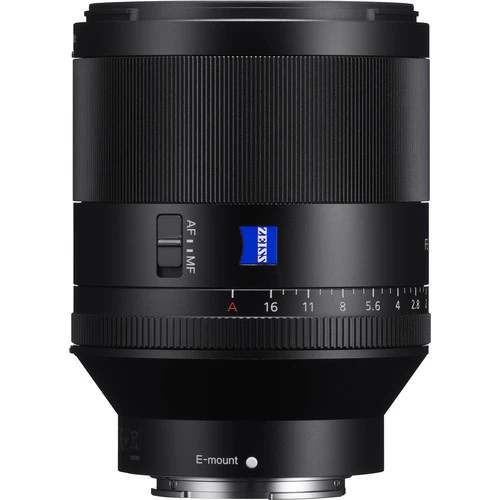
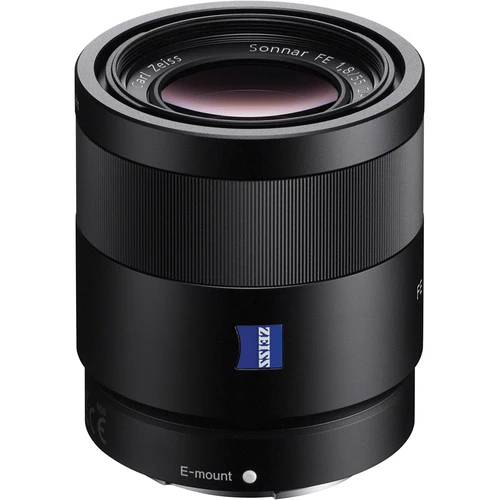
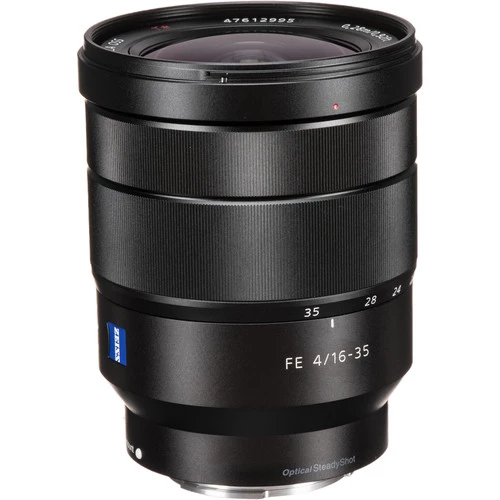
.webp)
 (1).webp)
 (1).webp)
.webp)
.webp)
